#PlantWednesday
PHOTOGRAPHY, COPYWRITING, SOCIAL MEDIA MANAGEMENT
During my tenure as Design & Communications Specialist at Lan Su, I wrote a weekly social media feature titled #PlantWednesday that highlighted seasonal interest around Lan Su. Each week, I focused on a different plant highlighting its cultural significance or visual interest. Below is that series, as seen on Instagram. #PlantWednesday received high engagement for our page, at an average of 3% engagement rate, with some posts in the feature breaking our like and engagement records. I also created variations for our Facebook and Twitter pages.
March 2, 2022
![]()
February 23, 2022
![]()

#PlantWednesday Penjing Spotlight 🪴
If you have been to the garden in the last week or so, you may have noticed some new penjing on display. Here is one of the bamboo penjing made by Lan Su Facilities & Horticulture Technician, Zach Stanley. 👨🌾
Bamboo penjing often take Chinese bamboo painting as inspiration. There is a long history of painting bamboo with stones. In fact, the brush strokes used for bamboo stems and leaves were convenient for scholars who made similar brush strokes in writing. This penjing used a painting by Huang Chun made during the 18th century as inspiration (second image). The inspiring painting included a little poem that starts, "Listening to the rain falling on the bamboo." A beautiful connection between poetry, painting, and penjing. 🪨🎋
The plant used is a dwarf bamboo called Bambusa multiplex. The pot was hand painted and imported from China and the stones were also imported from China.
If you have been to the garden in the last week or so, you may have noticed some new penjing on display. Here is one of the bamboo penjing made by Lan Su Facilities & Horticulture Technician, Zach Stanley. 👨🌾
Bamboo penjing often take Chinese bamboo painting as inspiration. There is a long history of painting bamboo with stones. In fact, the brush strokes used for bamboo stems and leaves were convenient for scholars who made similar brush strokes in writing. This penjing used a painting by Huang Chun made during the 18th century as inspiration (second image). The inspiring painting included a little poem that starts, "Listening to the rain falling on the bamboo." A beautiful connection between poetry, painting, and penjing. 🪨🎋
The plant used is a dwarf bamboo called Bambusa multiplex. The pot was hand painted and imported from China and the stones were also imported from China.
February 23, 2022
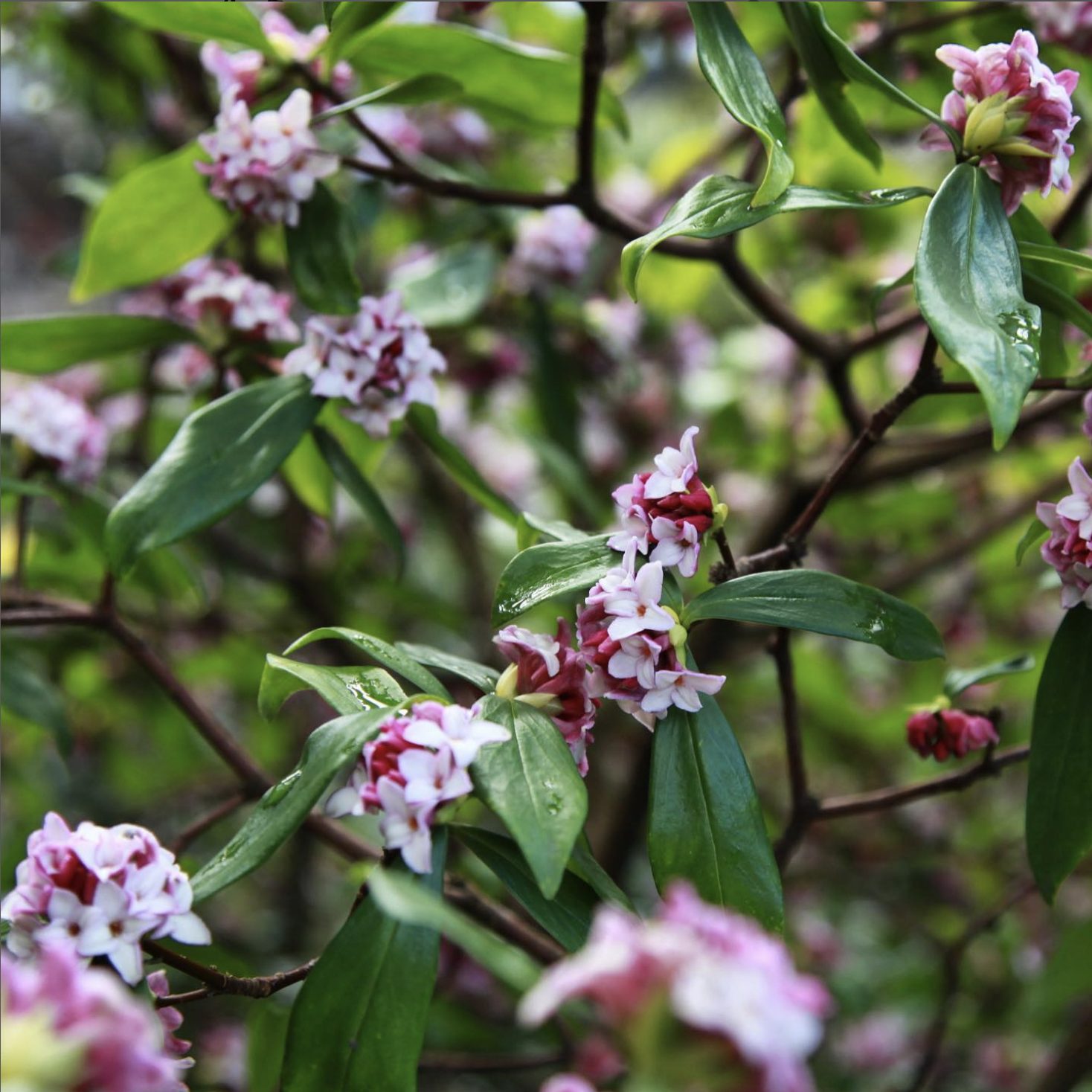
#PlantWednesday 🌸 Winter-blooming Daphne
This evergreen shrub explodes with clusters of pink flowers in winter that have a rich, orange blossom-like scent. The original Chinese name for this plant is “sleeping scent”. Legend has it that a monk fell asleep beneath the cliffs of the ancient Lu Mountain. There, he dreamt of an impossibly sweet fragrance, only to awake and find himself next to this sweetly fragrant plant. 🏔🛌
This evergreen shrub explodes with clusters of pink flowers in winter that have a rich, orange blossom-like scent. The original Chinese name for this plant is “sleeping scent”. Legend has it that a monk fell asleep beneath the cliffs of the ancient Lu Mountain. There, he dreamt of an impossibly sweet fragrance, only to awake and find himself next to this sweetly fragrant plant. 🏔🛌
February 9, 2022
![]()
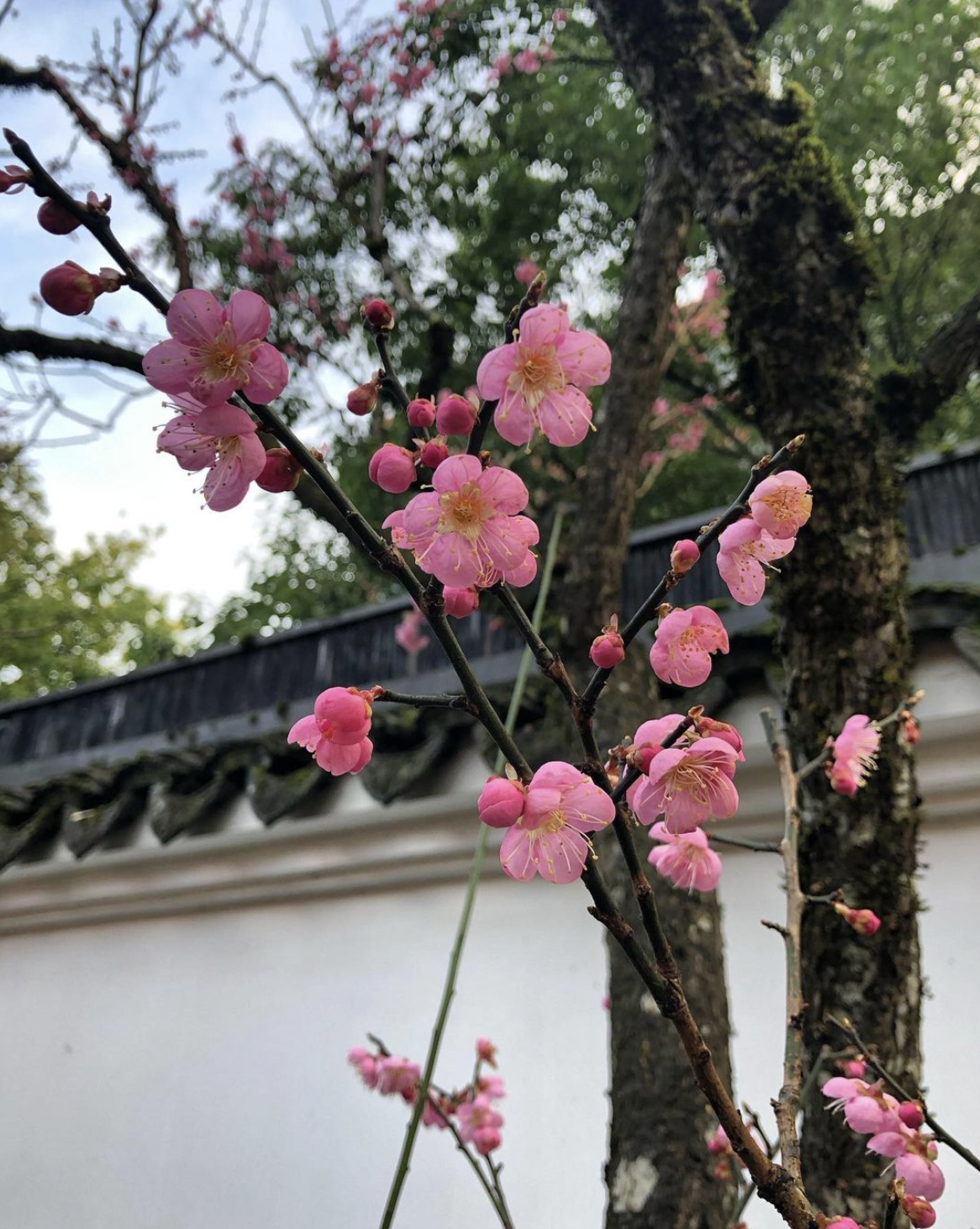
#PlantWednesday 🌸 Hope in the coldest months
Chinese plum, Prunus mume is one of the most culturally significant plants in China. Together with pine and bamboo it forms the poetic motif, The Three Friends of Winter. Chinese plum flower represents hope and resilience given its ability to flower in the coldest months. The flower’s five petals also represent the five blessings of life- longevity, health, wealth, love of virtue, and a good end to life.
Chinese plum, Prunus mume is one of the most culturally significant plants in China. Together with pine and bamboo it forms the poetic motif, The Three Friends of Winter. Chinese plum flower represents hope and resilience given its ability to flower in the coldest months. The flower’s five petals also represent the five blessings of life- longevity, health, wealth, love of virtue, and a good end to life.
February 2, 2022
![]()
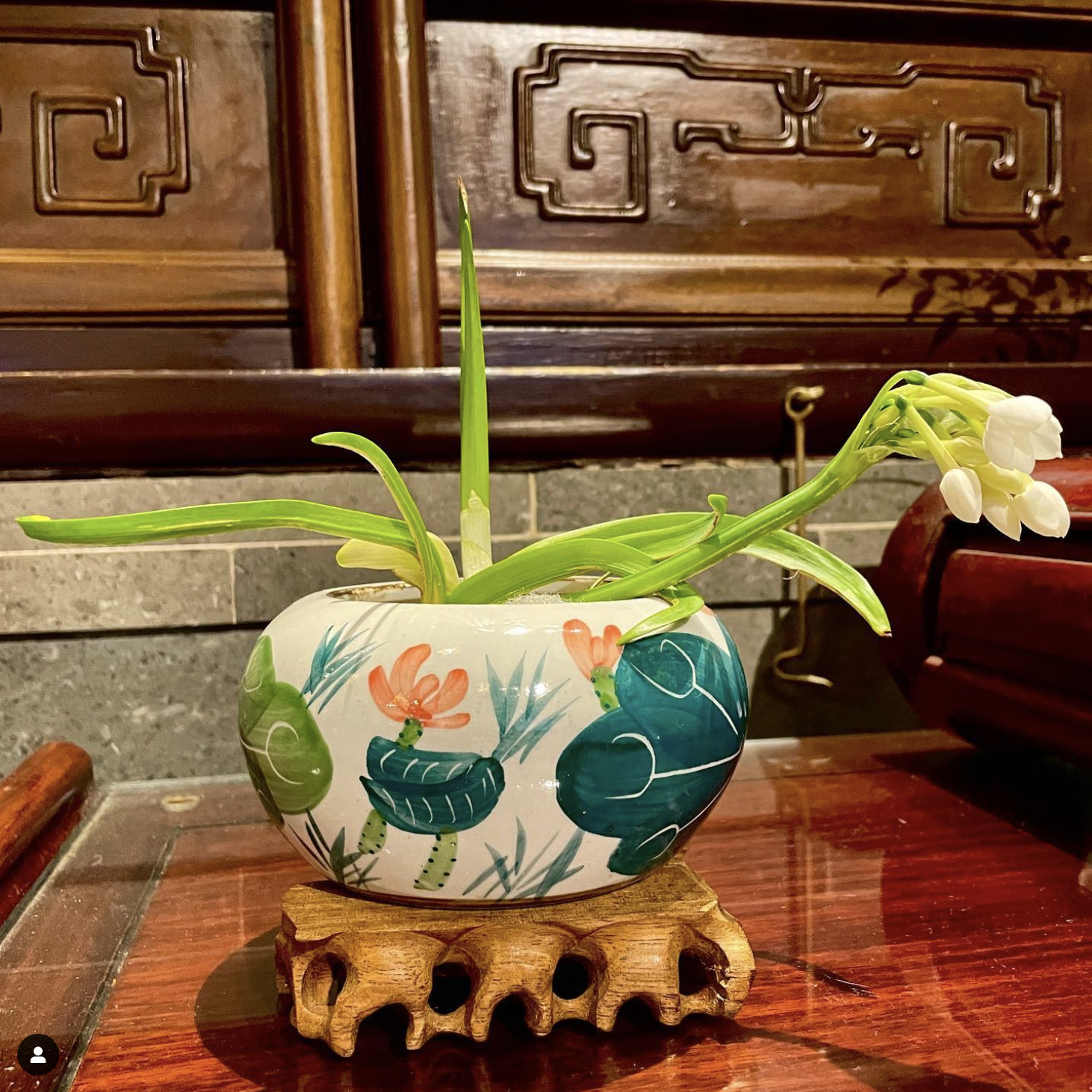
#PlantWednesday Bulb carving 🧄
Since Narcissus (#水仙) bloom around Chinese New Year, it is a flower commonly associated with the celebration. Carving the bulbs so the plant takes a unique shape is an artform originating in Fujian province and dating back over 500 years.
Here is one of two narcissus bulbs that were carved for Chinese New Year by Zach Stanley, the gardenas Facilities and Horticulture Technician.
During the carving process, the leaves are scarred so that when they emerge they curl. A poetic name for carved narcissus bulbs is #凌波仙子 which means “fairies walking on rippled water.” The arrangement is presented in a setting that highlights this association. The bulb is resting on pebbles (stones shaped by water), and the container depicts lotus plants (typically growing in water). This one has already started to bloom, a sign of good fortune for the new year. 😊
Since Narcissus (#水仙) bloom around Chinese New Year, it is a flower commonly associated with the celebration. Carving the bulbs so the plant takes a unique shape is an artform originating in Fujian province and dating back over 500 years.
Here is one of two narcissus bulbs that were carved for Chinese New Year by Zach Stanley, the gardenas Facilities and Horticulture Technician.
During the carving process, the leaves are scarred so that when they emerge they curl. A poetic name for carved narcissus bulbs is #凌波仙子 which means “fairies walking on rippled water.” The arrangement is presented in a setting that highlights this association. The bulb is resting on pebbles (stones shaped by water), and the container depicts lotus plants (typically growing in water). This one has already started to bloom, a sign of good fortune for the new year. 😊
January 19, 2022
![]()
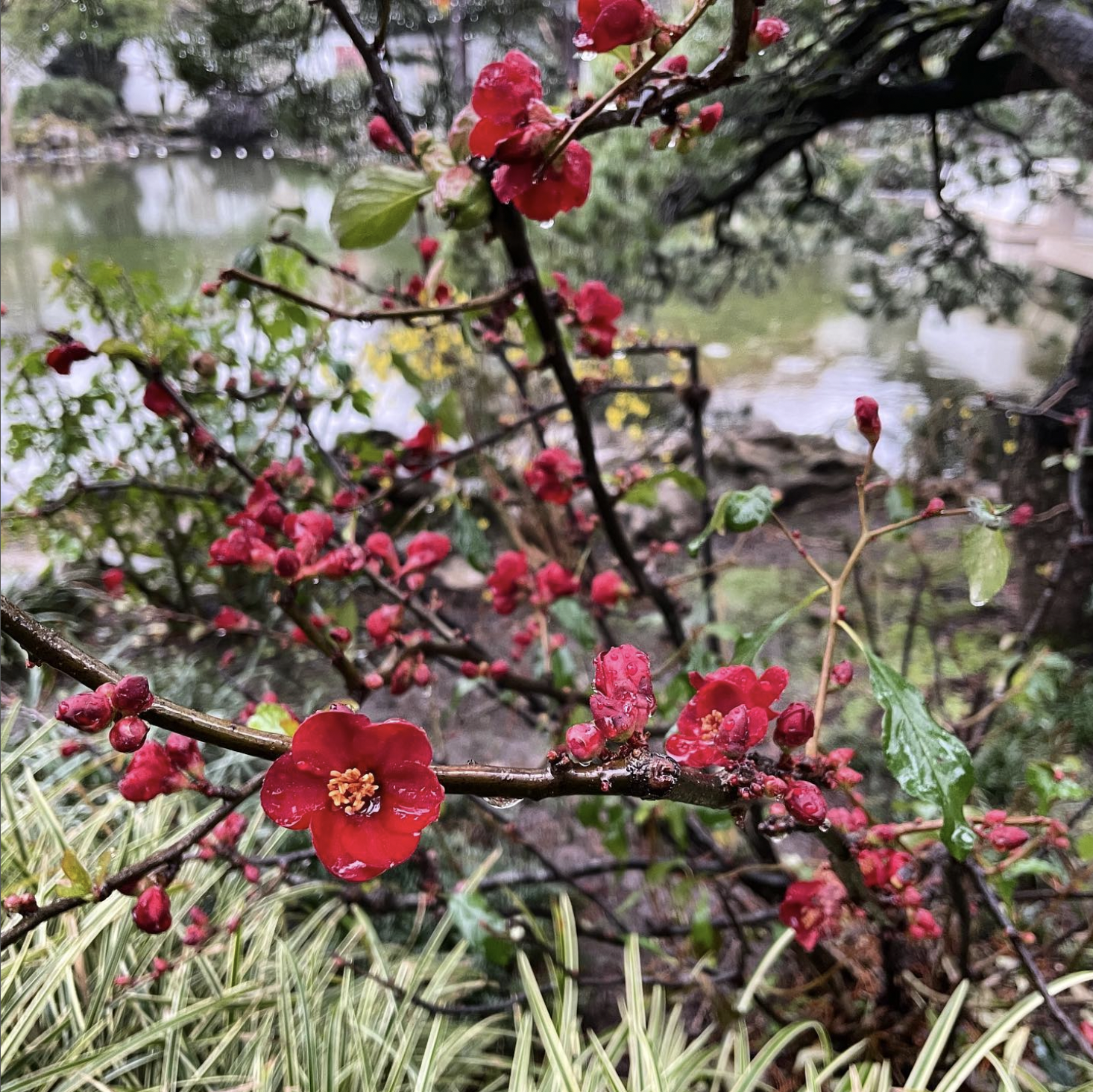
#PlantWednesday 🌸 In Chinese folktale, the flowering quince was a celestial plant
fallen from the Moon Palace. These delicate blossoms have long been
grown in Chinese gardens and are also used in #penjing , Chinese miniature potted landscapes. Here is one of our quince
(Chaenomeles japonica ‘Atsuya Hamada’) showing off her celestial beauty.
🎎
January 5, 2022
![]()
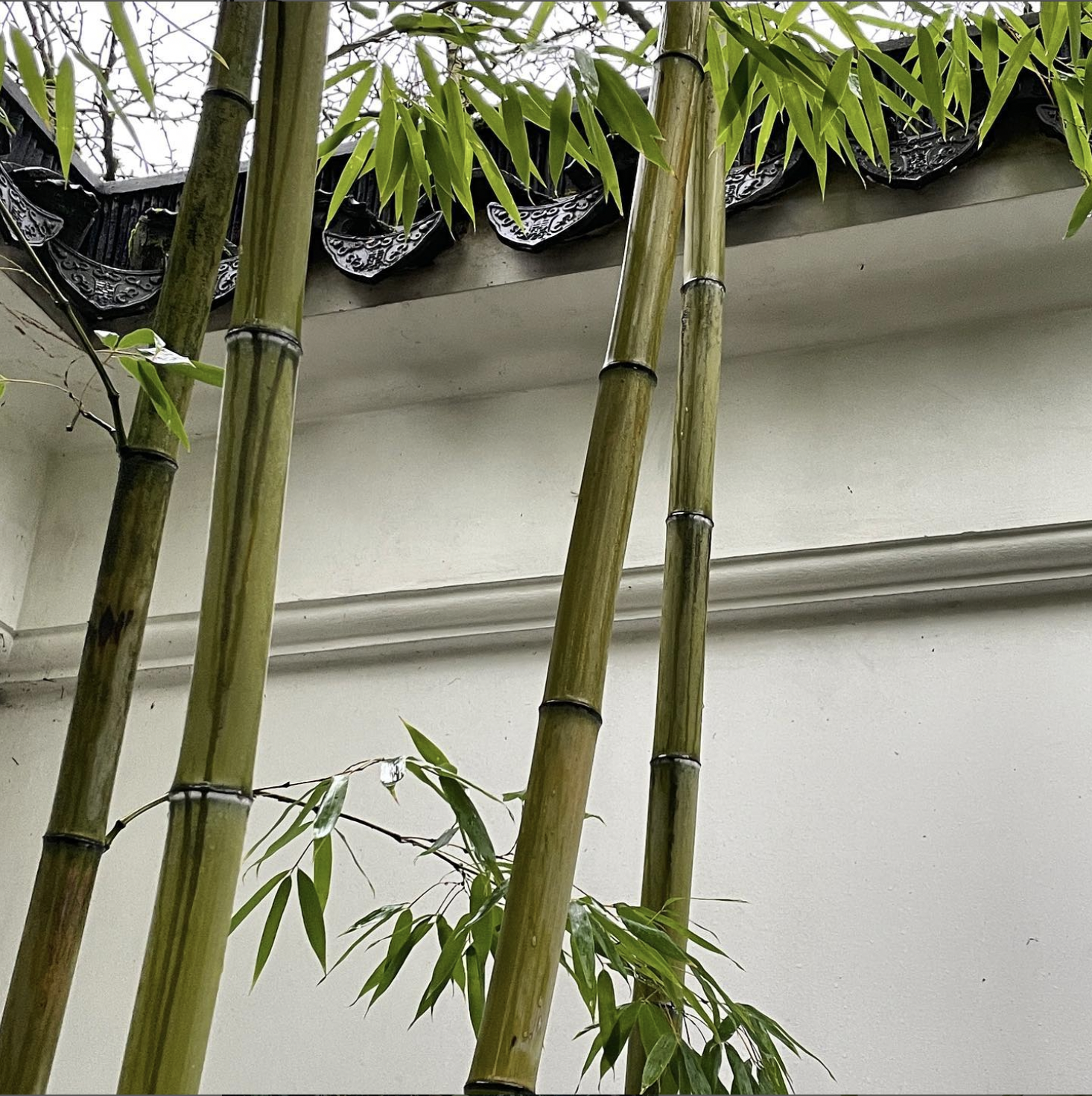
#PlantWednesday 🎋 Sturdy yet flexible
Bamboo, together with pine and plum is part of a popular motif in Chinese gardens — the Three Friends of Winter. This trio of plants are known for their abilities to persevere through winter, coming to represent resilience and fortitude during difficult times.
Bamboo is a member of the grass family with many handy uses. Being evergreen, pliable and strong, it is associated with flexibility and integrity - being able to bend without breaking. Pictured here is Phyllostachys edulis ’Moso’ or timber bamboo, one of 10 species of bamboo at Lan Su.
Bamboo, together with pine and plum is part of a popular motif in Chinese gardens — the Three Friends of Winter. This trio of plants are known for their abilities to persevere through winter, coming to represent resilience and fortitude during difficult times.
Bamboo is a member of the grass family with many handy uses. Being evergreen, pliable and strong, it is associated with flexibility and integrity - being able to bend without breaking. Pictured here is Phyllostachys edulis ’Moso’ or timber bamboo, one of 10 species of bamboo at Lan Su.
December 29, 2021
![]()
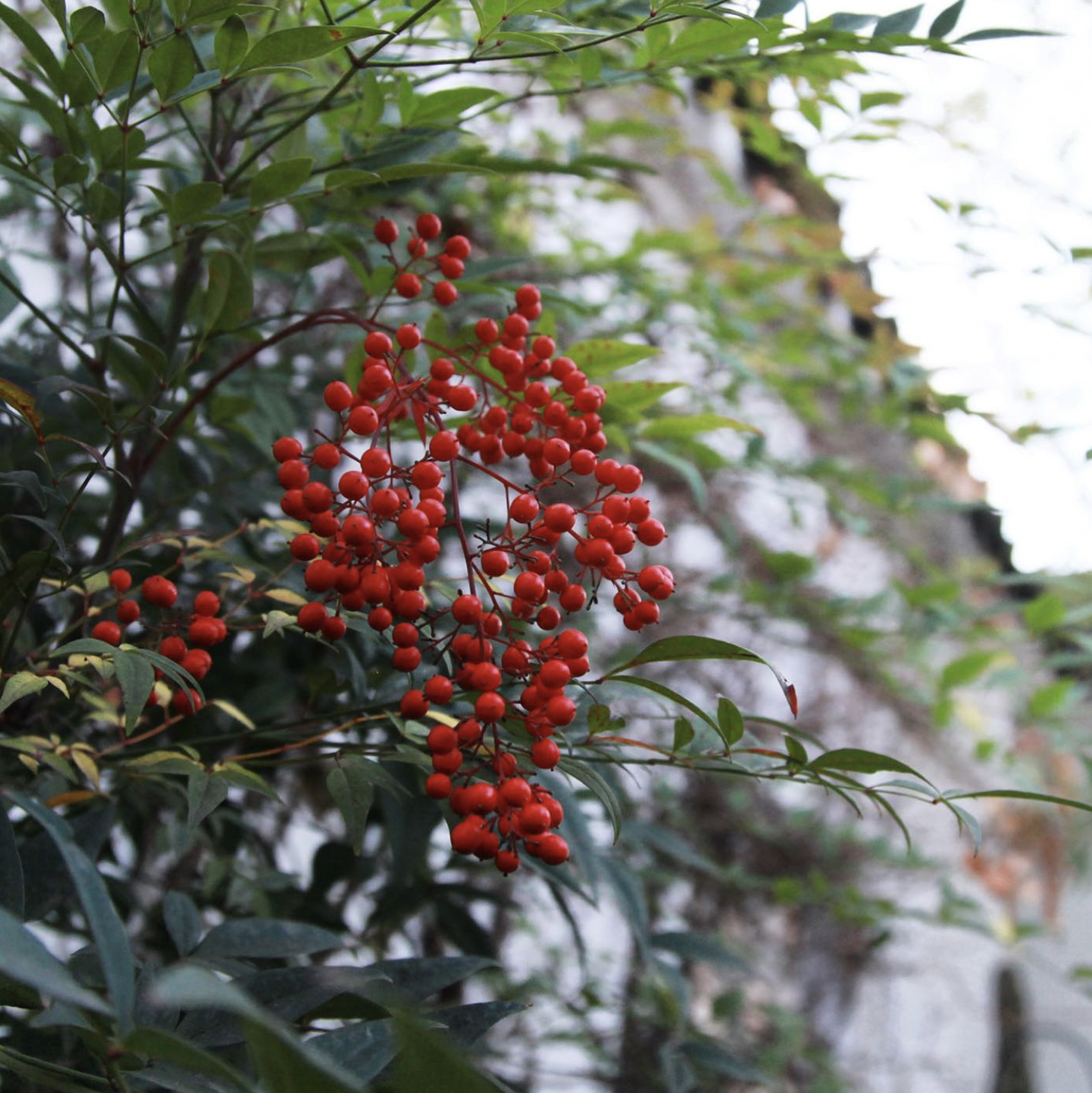
#PlantWednesday
Called “Heavenly Bamboo '' for its bamboo-like foliage, Nandina domestica has white flowers in summer that turn to bright red berry clusters in the winter. Native to China, it has been cultivated in Chinese gardens since at least the Tang dynasty (618–907 CE). Around Chinese New Year the festive berry sprays are displayed indoors in flower arrangements and as altar decorations.
Called “Heavenly Bamboo '' for its bamboo-like foliage, Nandina domestica has white flowers in summer that turn to bright red berry clusters in the winter. Native to China, it has been cultivated in Chinese gardens since at least the Tang dynasty (618–907 CE). Around Chinese New Year the festive berry sprays are displayed indoors in flower arrangements and as altar decorations.
December 15, 2021
![]()

#PlantWednesday 🌼
Look for our winter jasmine (Jasminum nudiflorum) along the edge of Lake Zither where its yellow flowers cascade down over the rocks. The plant has a cultivation history of more than 1,000 years in China and is known for its high tolerance to the cold. This beauty blooms during the coldest time of year and is a valuable food source for the hummingbirds that visit the garden year-round.
Look for our winter jasmine (Jasminum nudiflorum) along the edge of Lake Zither where its yellow flowers cascade down over the rocks. The plant has a cultivation history of more than 1,000 years in China and is known for its high tolerance to the cold. This beauty blooms during the coldest time of year and is a valuable food source for the hummingbirds that visit the garden year-round.
December 8, 2021
![]()
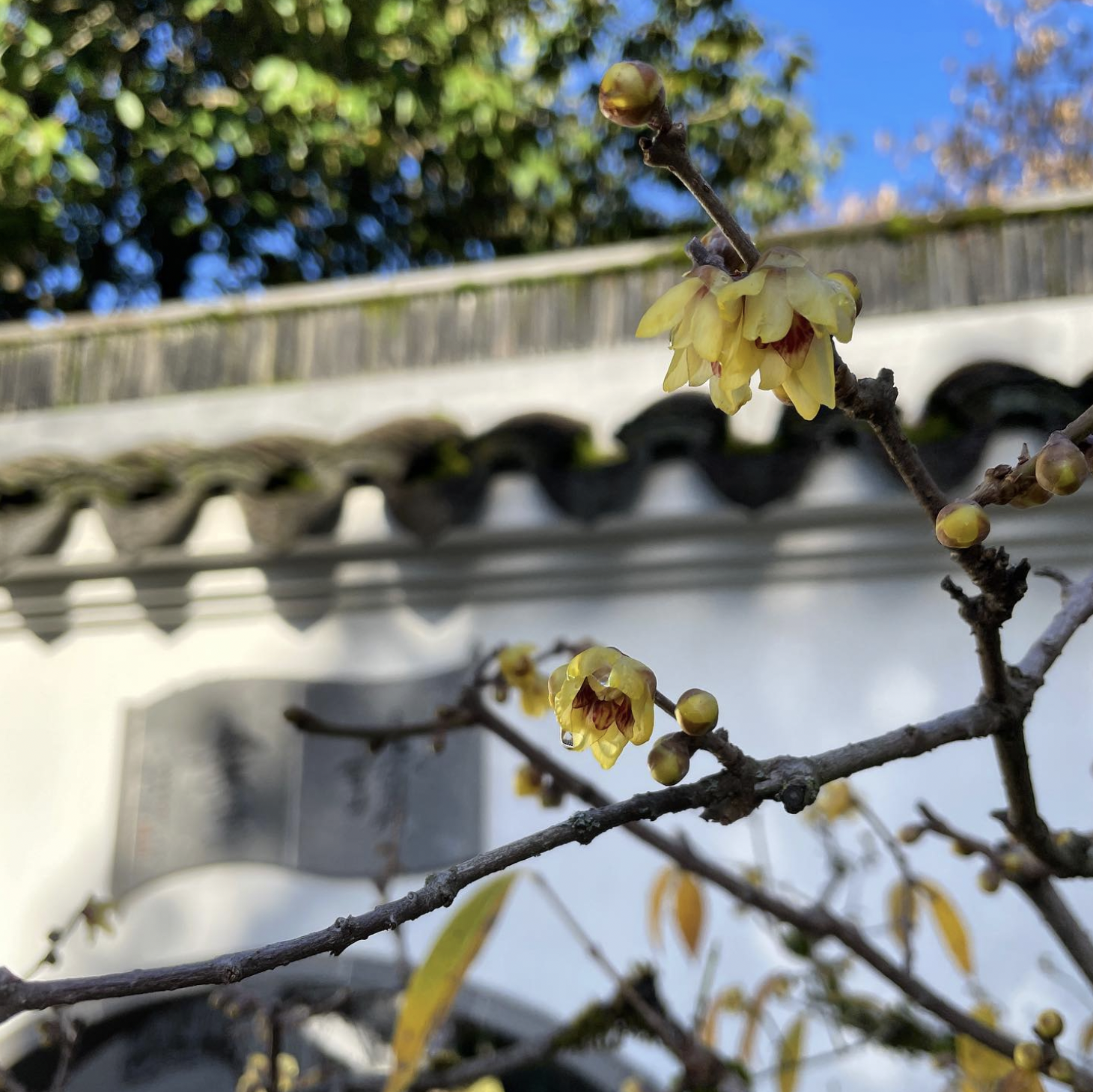
#PlantWednesday 🏵️ Wintersweet (Chimonanthus praecox) is the floral symbol of the 12th lunar month. This beauty is nicknamed "wax plum" (#臘梅)
in Chinese for its waxy yellow flowers. It is also a common subject in
Chinese New Year poetry and songs. When you smell its delicious sweet
fragrance, you know Chinese New Year is approaching. It’s blooming on
the early side this year, but we can’t blame it. We’re already getting
excited for Chinese New Year too! #MoreThanAGarden
December 1, 2021
![]()
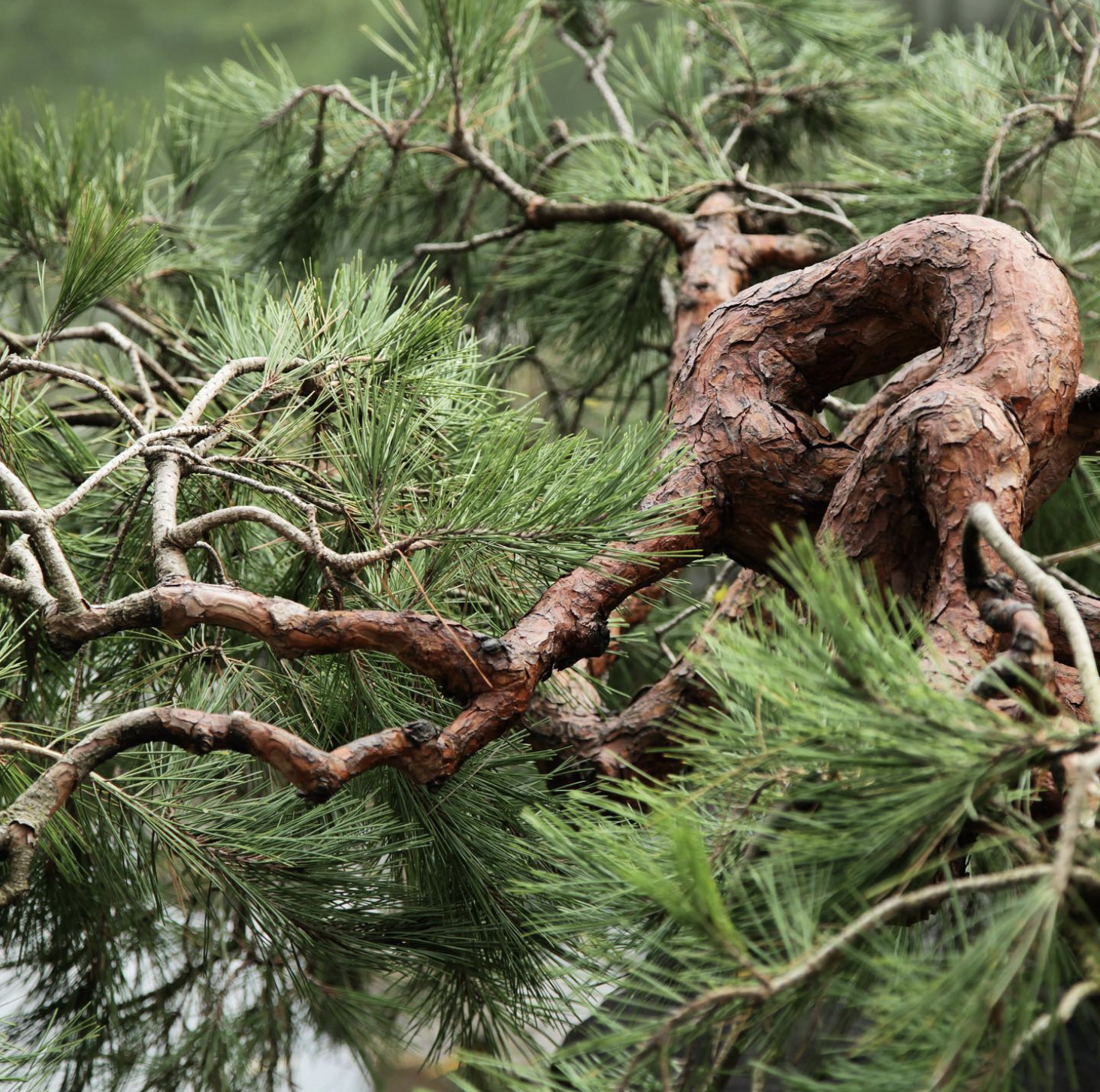
#PlantWednesday 🌲
Pines are one-third of an important plant motif in Chinese gardens- the Three Friends of Winter (#歲寒三友). Together with plum and bamboo, this trio represents perseverance through difficult seasons of life.
Pine trees are evergreen, not losing their needles in the winter. They represent fortitude during harsh or tough times. This Pinus densiflora, ‘Pendula’ has been shaped over many seasons into a complex and beautiful shape.
Pines are one-third of an important plant motif in Chinese gardens- the Three Friends of Winter (#歲寒三友). Together with plum and bamboo, this trio represents perseverance through difficult seasons of life.
Pine trees are evergreen, not losing their needles in the winter. They represent fortitude during harsh or tough times. This Pinus densiflora, ‘Pendula’ has been shaped over many seasons into a complex and beautiful shape.
November 24, 2021
![]()
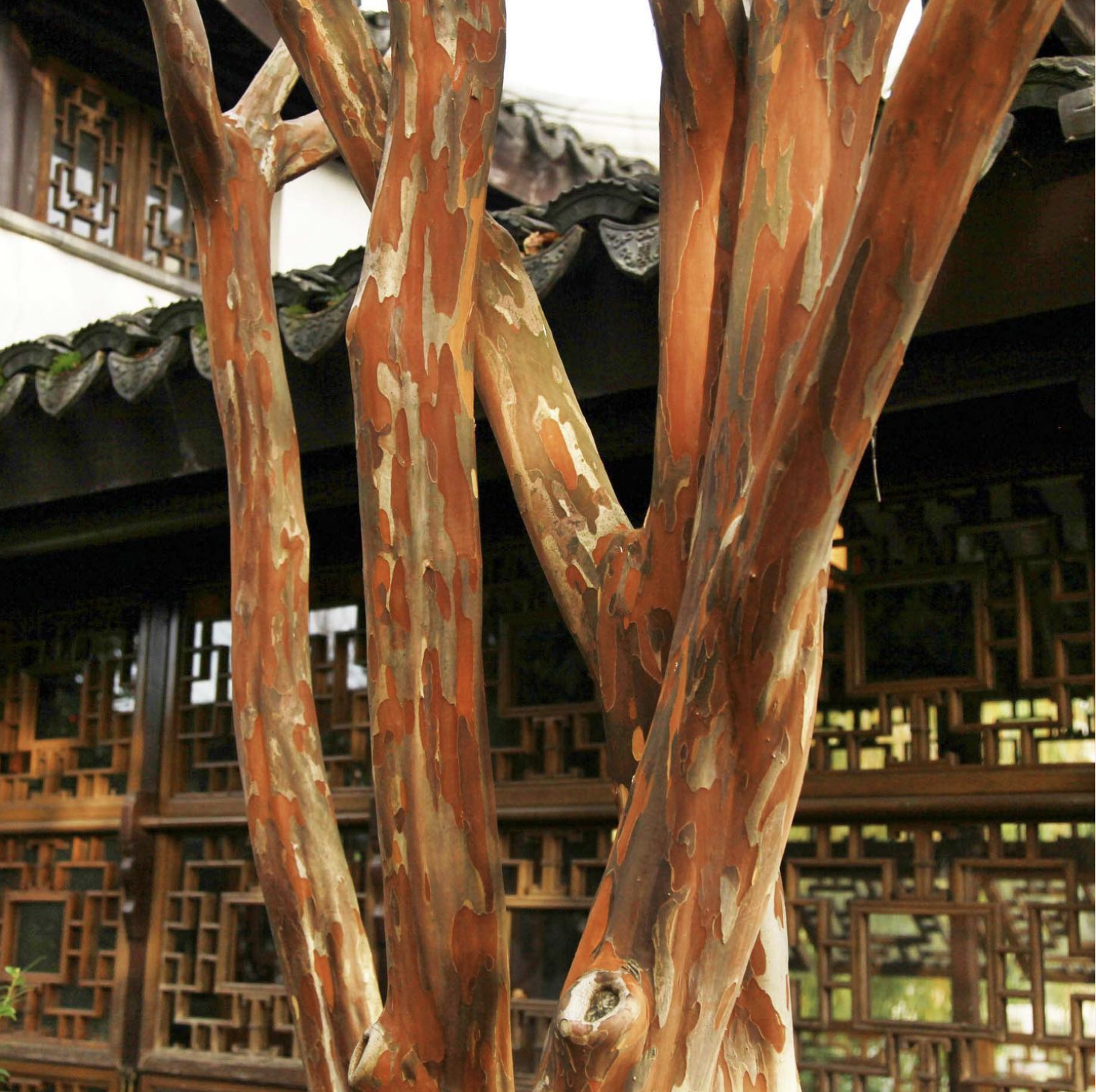
#PlantWednesday 🌳
In late fall as leaves and flowers disappear from deciduous plants, their structures and bark start to catch special notice. Just look at this mottled crape myrtle bark! (Lagerstromia ‘Natchez’) Such a stunning pattern.
This Chinese native was a favorite ornamental tree during the Tang dynasty (616-906 CE), when it was a common sight on palace grounds. If flowers are more your thing, they also have gorgeous bloom clusters in late summer. Something for everyone!
In late fall as leaves and flowers disappear from deciduous plants, their structures and bark start to catch special notice. Just look at this mottled crape myrtle bark! (Lagerstromia ‘Natchez’) Such a stunning pattern.
This Chinese native was a favorite ornamental tree during the Tang dynasty (616-906 CE), when it was a common sight on palace grounds. If flowers are more your thing, they also have gorgeous bloom clusters in late summer. Something for everyone!
November 10, 2021
![]()
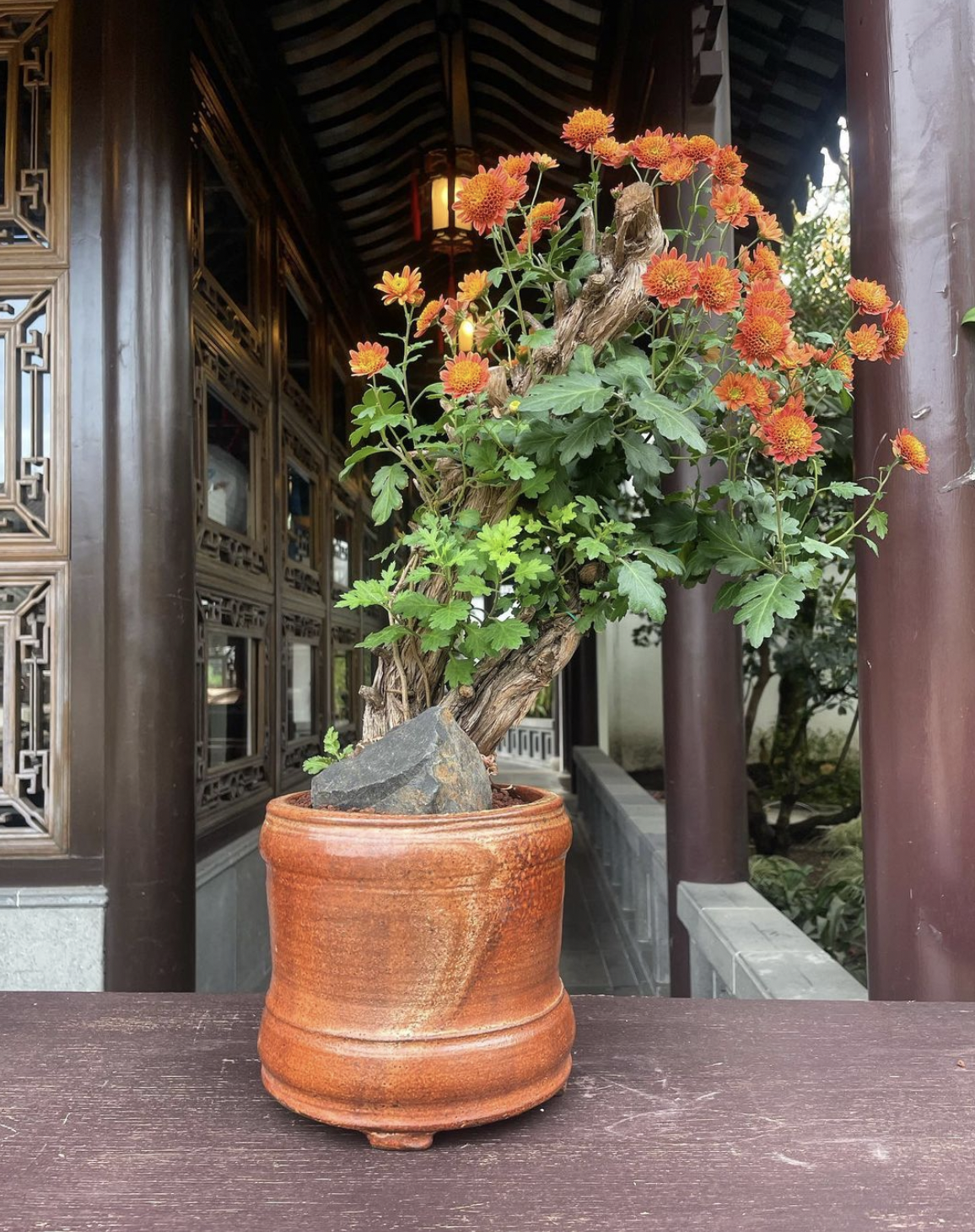
#PlantWednesday 🌼 Mum Penjing
Penjing is a traditional Chinese art of stylistically cultivating a plant in a pot. Maybe you have heard of its Japanese counterpart, bonsai? While both are artistic interpretations of nature, the aim of penjing is to create a small-scale landscape scene, whereas bonsai is focused on recreating the shape of a full-grown tree in miniature.
🏞Come see them for yourself! Through November 21, we are featuring chrysanthemum penjing at Lan Su as part of our Celebration of the Chrysanthemum.
🤓If you are interested in learning how to create your own mum penjing, join us on Sunday, Nov 14, for an in-person demonstration on Cultivating Chrysanthemum Penjing with Asian gardening consultant, Mark Vossbrink. Link in bio for more information.
Penjing is a traditional Chinese art of stylistically cultivating a plant in a pot. Maybe you have heard of its Japanese counterpart, bonsai? While both are artistic interpretations of nature, the aim of penjing is to create a small-scale landscape scene, whereas bonsai is focused on recreating the shape of a full-grown tree in miniature.
🏞Come see them for yourself! Through November 21, we are featuring chrysanthemum penjing at Lan Su as part of our Celebration of the Chrysanthemum.
🤓If you are interested in learning how to create your own mum penjing, join us on Sunday, Nov 14, for an in-person demonstration on Cultivating Chrysanthemum Penjing with Asian gardening consultant, Mark Vossbrink. Link in bio for more information.
October 27, 2021
![]()
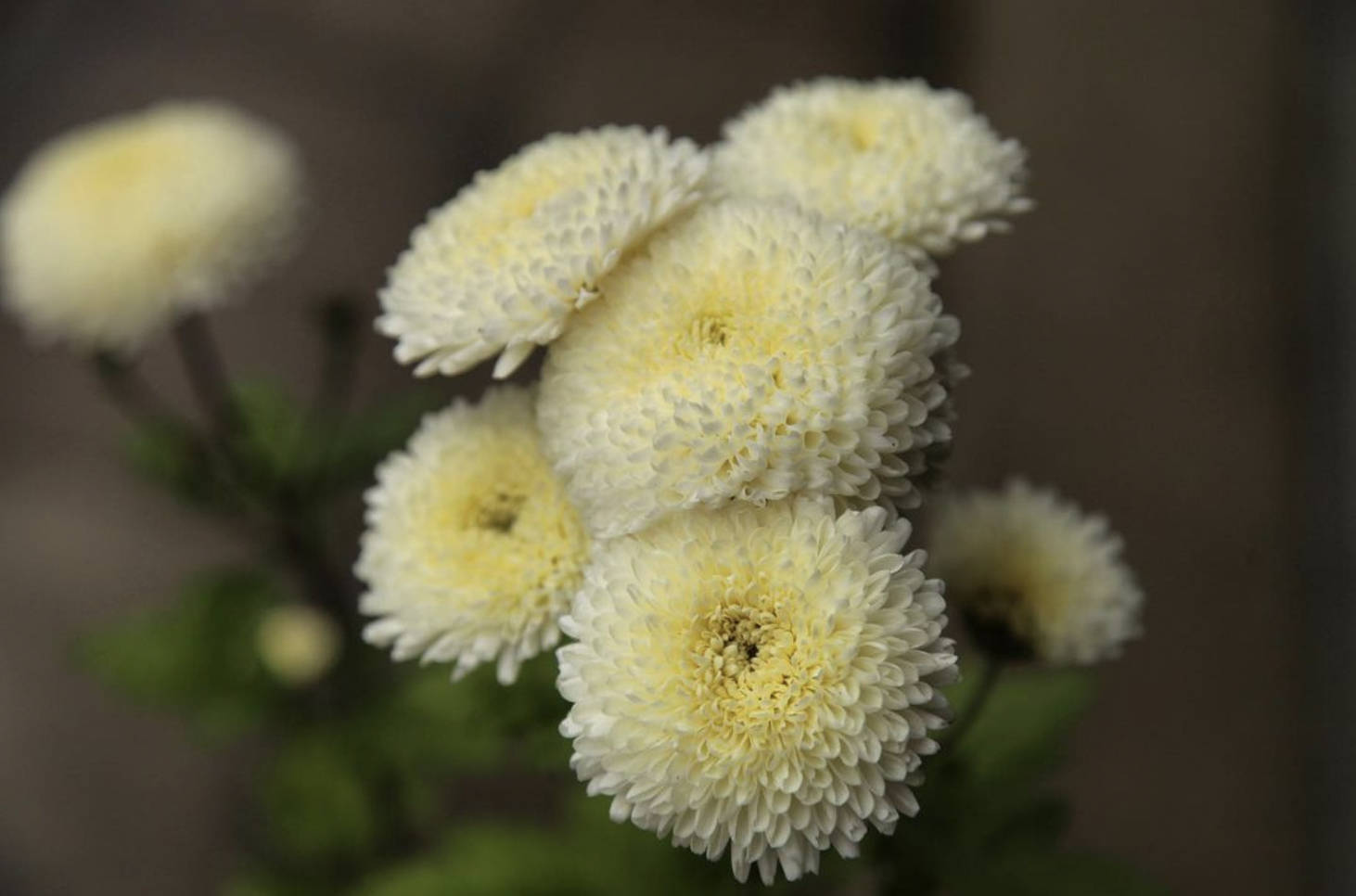
#PlantWednesday 🔆 Chinese Symbol of Autumn
"I pluck chrysanthemums under the eastern fence.
And serenely I gaze at the southern mountains."
- Drinking Wine by Tao Yuanming
The Chrysanthemum has been cultivated in China as early as 700 BC and soon gained favor as the symbol of Autumn. Longevity and immortality are only a couple the themes associated with Chrysanthemum, in part due to its use in medicine and earning its fame in poetry. The famous Chinese scholar poet Tao Yuanming #陶淵明 (365-427 CE) made the proverbial connection with the lifestyle of a hermit as the autumn chrysanthemum avoids the crowded floral market in the spring.
To learn more, and enjoy chrysanthemums with Lan Su, join us November 1-21 for Celebration of the Chrysanthemum! lansugarden.org/chrysanthemum or link in bio 😌
"I pluck chrysanthemums under the eastern fence.
And serenely I gaze at the southern mountains."
- Drinking Wine by Tao Yuanming
The Chrysanthemum has been cultivated in China as early as 700 BC and soon gained favor as the symbol of Autumn. Longevity and immortality are only a couple the themes associated with Chrysanthemum, in part due to its use in medicine and earning its fame in poetry. The famous Chinese scholar poet Tao Yuanming #陶淵明 (365-427 CE) made the proverbial connection with the lifestyle of a hermit as the autumn chrysanthemum avoids the crowded floral market in the spring.
To learn more, and enjoy chrysanthemums with Lan Su, join us November 1-21 for Celebration of the Chrysanthemum! lansugarden.org/chrysanthemum or link in bio 😌
October 20, 2021
![]()
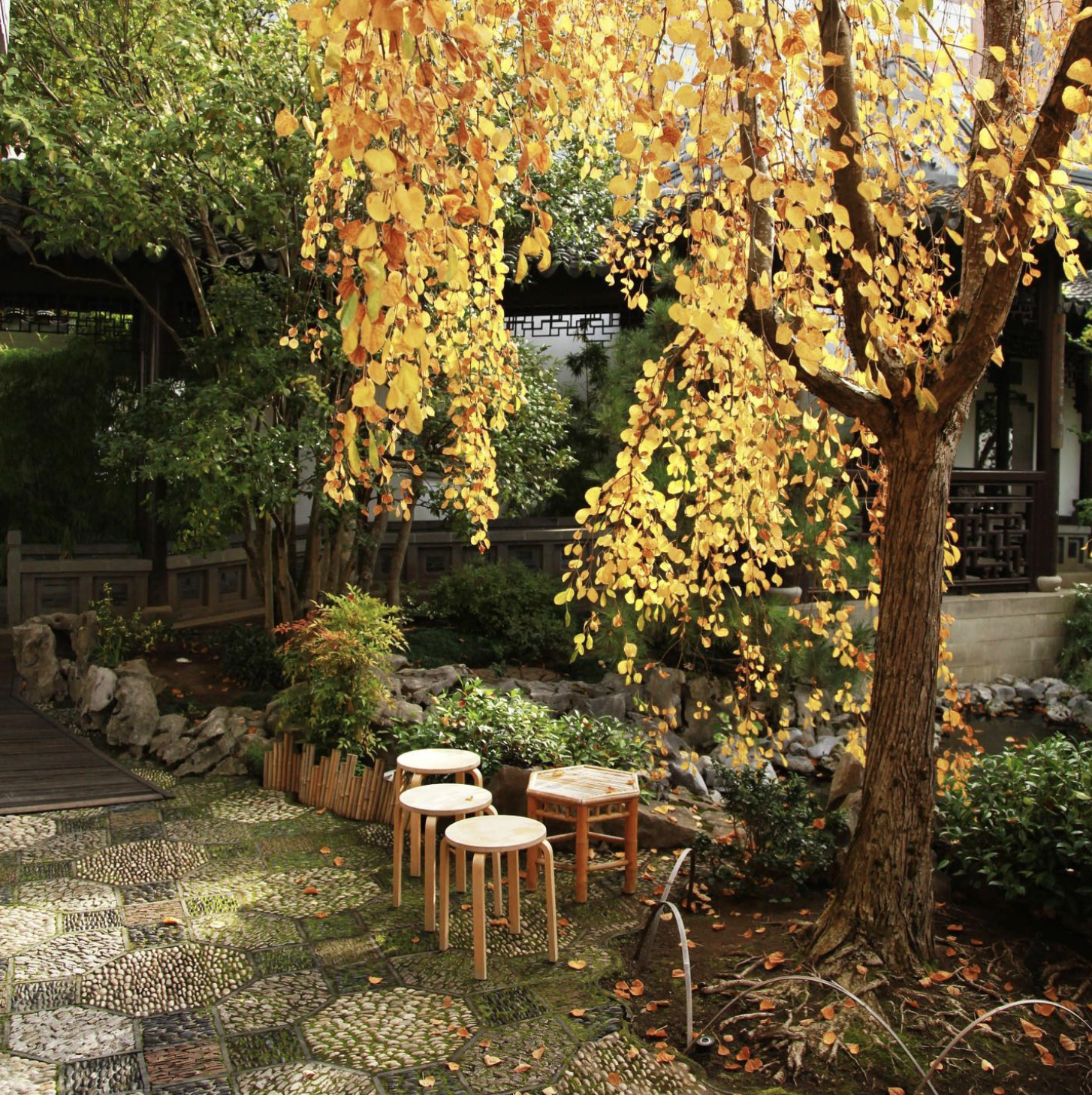
#PlantWednesday 🍂 Weeping Katsura
Cercidiphyllum japonicum ‘Pendulum’ AKA Weeping Katsura is a species of small deciduous tree, native to China and Japan. These small trees have adorable heart-shaped leaves 🍁🥺 Come Fall, its yellow-brown leaves smell like burnt sugar, earning it another common name — caramel tree.
Cercidiphyllum japonicum ‘Pendulum’ AKA Weeping Katsura is a species of small deciduous tree, native to China and Japan. These small trees have adorable heart-shaped leaves 🍁🥺 Come Fall, its yellow-brown leaves smell like burnt sugar, earning it another common name — caramel tree.
October 13, 2021
![]()
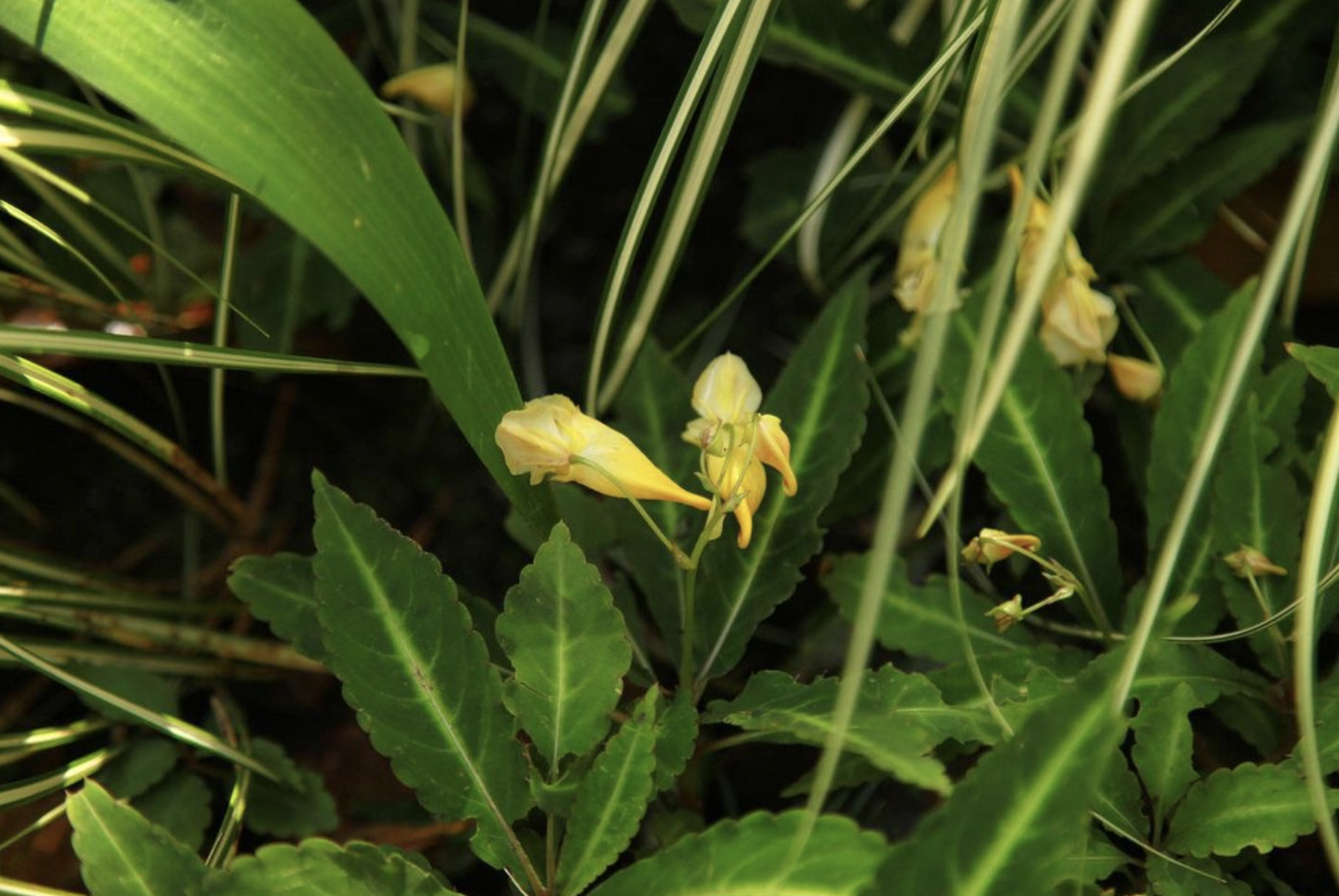
#PlantWednesday 🔆 Mt. Emei Impatiens
Impatiens omeiana ‘Mount Emei’ is often grown as a ground cover because of it’s attractive leaves with yellow markings. However, they also bloom in early to mid Fall with tube shaped yellow flowers that somewhat resemble a fish’s mouth. 🐠 Ours haven’t bloomed in some time, but thanks to our new irrigation system, we have flowers this year! See if you can find them in the Scholar’s Courtyard. 🔍
Impatiens omeiana ‘Mount Emei’ is often grown as a ground cover because of it’s attractive leaves with yellow markings. However, they also bloom in early to mid Fall with tube shaped yellow flowers that somewhat resemble a fish’s mouth. 🐠 Ours haven’t bloomed in some time, but thanks to our new irrigation system, we have flowers this year! See if you can find them in the Scholar’s Courtyard. 🔍
October 6, 2021
![]()
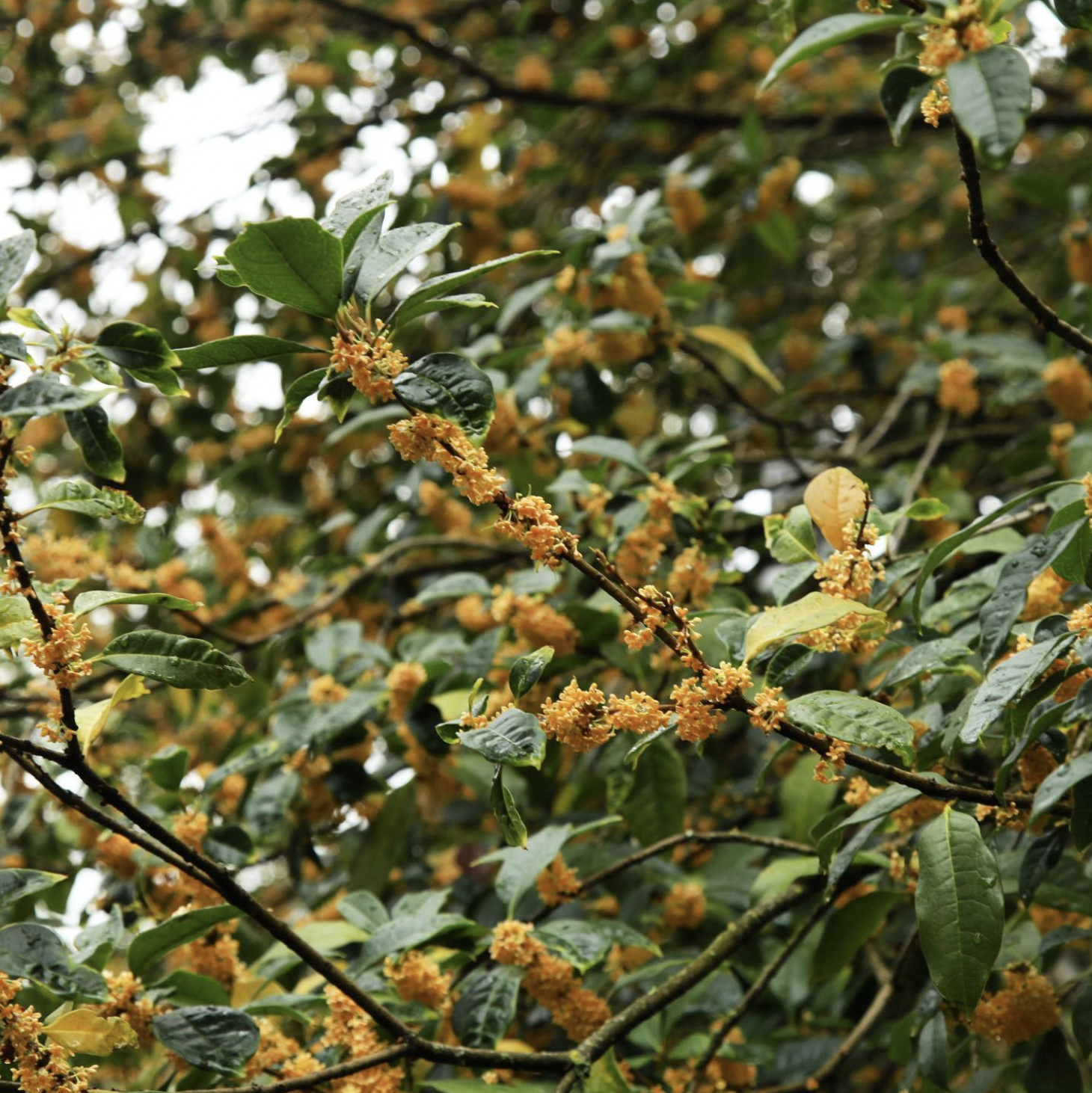
#PlantWednesday ✏️Magical Osmanthus
Osmanthus are evergreen trees or shrubs with intensely fragrant flowers. Lan Su’s collection includes several species and cultivars with different leaf shapes and flower colors.
Native to China, osmanthus is associated with tales about the moon because they traditionally bloom around the time of Mid-Autumn festival - and the same time that Chinese imperial exams are traditionally administered. Legend has it that there is a self-healing osmanthus tree in the Moon Palace. Scholars who ranked high on their civil exam would be given a gift of an osmanthus branch. This is in reference to a Jin dynasty (260 AD) administrator who recommended himself for promotion to prime minister by saying his talent was as rare as “a branch of osmanthus in the Moon Palace.” 🌙 To this day, the saying #折桂, or “bending the osmanthus” is used to describe someone who earns a good grade on their exams.
If you’ve got midterms coming up, it couldn't hurt to stop by and smell the osmanthus for good luck. But please don’t pick a branch – ours aren’t the self-healing species. 💛
Osmanthus are evergreen trees or shrubs with intensely fragrant flowers. Lan Su’s collection includes several species and cultivars with different leaf shapes and flower colors.
Native to China, osmanthus is associated with tales about the moon because they traditionally bloom around the time of Mid-Autumn festival - and the same time that Chinese imperial exams are traditionally administered. Legend has it that there is a self-healing osmanthus tree in the Moon Palace. Scholars who ranked high on their civil exam would be given a gift of an osmanthus branch. This is in reference to a Jin dynasty (260 AD) administrator who recommended himself for promotion to prime minister by saying his talent was as rare as “a branch of osmanthus in the Moon Palace.” 🌙 To this day, the saying #折桂, or “bending the osmanthus” is used to describe someone who earns a good grade on their exams.
If you’ve got midterms coming up, it couldn't hurt to stop by and smell the osmanthus for good luck. But please don’t pick a branch – ours aren’t the self-healing species. 💛
September 29, 2021
![]()

#PlantWednesday 7️⃣👶 Seven Sons Flower
Native to China, Heptacodium miconioides is a late summer bloomer with fragrant white flowers and exfoliating bark.
🌸 In mid-Fall, after the flowers are pollinated, the sepals of the flowers turn pink and lengthen to support fruit (shown here ☺️). The common name "seven sons flower" is a direct translation of its Chinese name qī zi huā (七子花 ).
Native to China, Heptacodium miconioides is a late summer bloomer with fragrant white flowers and exfoliating bark.
🌸 In mid-Fall, after the flowers are pollinated, the sepals of the flowers turn pink and lengthen to support fruit (shown here ☺️). The common name "seven sons flower" is a direct translation of its Chinese name qī zi huā (七子花 ).
September 22, 2021
![]()
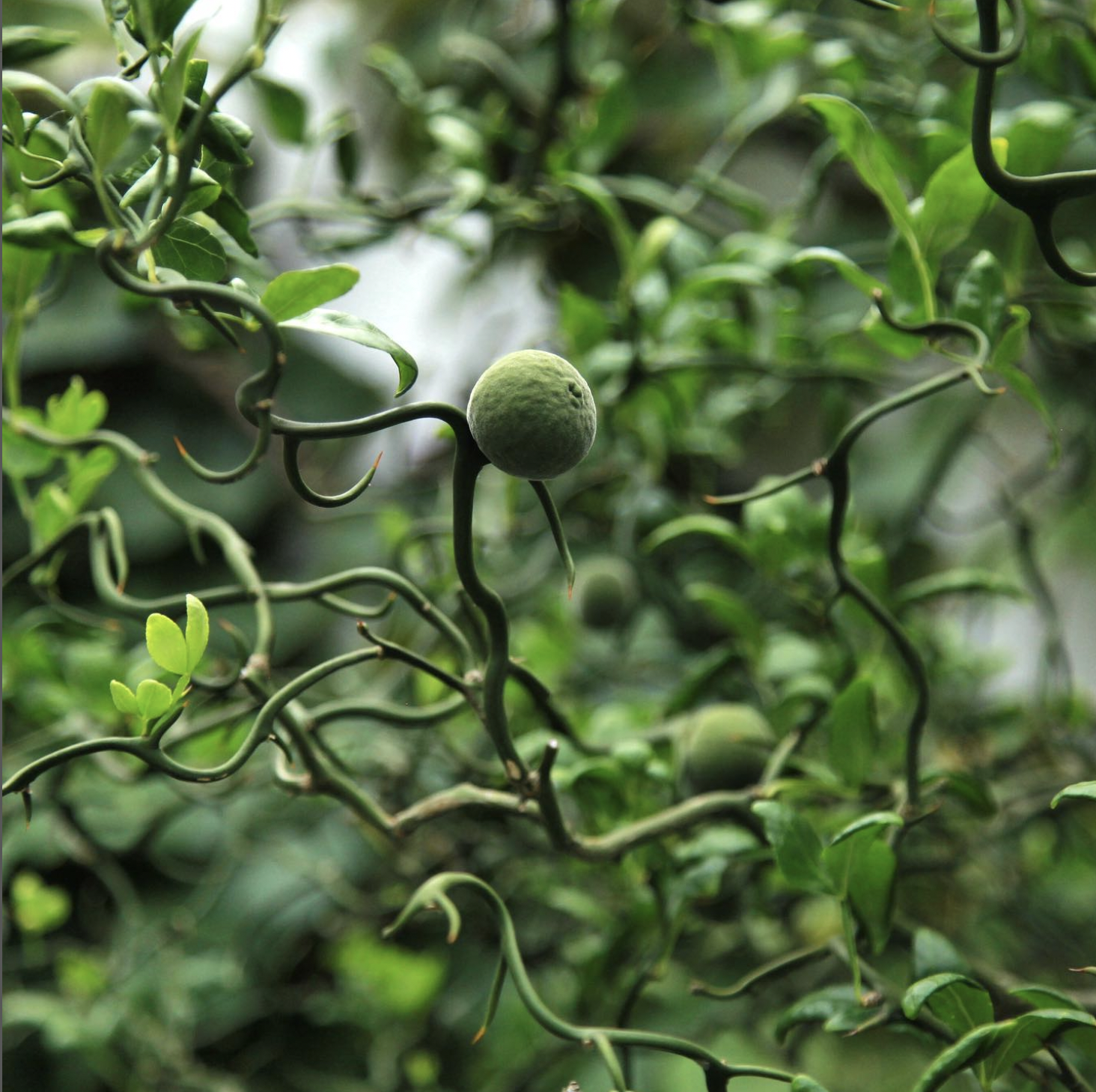
#PlantWednesday 🍊🐉 Flying Dragon Citrus
Happy Autumnal Equinox! With Autumn comes the ripening of tree fruits in the garden. Citrus trifoliata is native to China and in the Rutaceae (citrus) family. The fruits are edible but very acidic, used in marmalades and zest, and used to perfume rooms. As fall progresses, the leaves and fruits will turn a vibrant yellow.
‘Flying Dragon’ is a dwarf cultivar with highly contorted stems and long sharp spines, it is the only deciduous citrus and is commonly used as rootstock for other citrus varieties due to its cold tolerance and disease resistance. 💛
Happy Autumnal Equinox! With Autumn comes the ripening of tree fruits in the garden. Citrus trifoliata is native to China and in the Rutaceae (citrus) family. The fruits are edible but very acidic, used in marmalades and zest, and used to perfume rooms. As fall progresses, the leaves and fruits will turn a vibrant yellow.
‘Flying Dragon’ is a dwarf cultivar with highly contorted stems and long sharp spines, it is the only deciduous citrus and is commonly used as rootstock for other citrus varieties due to its cold tolerance and disease resistance. 💛
September 8, 2021
![]()
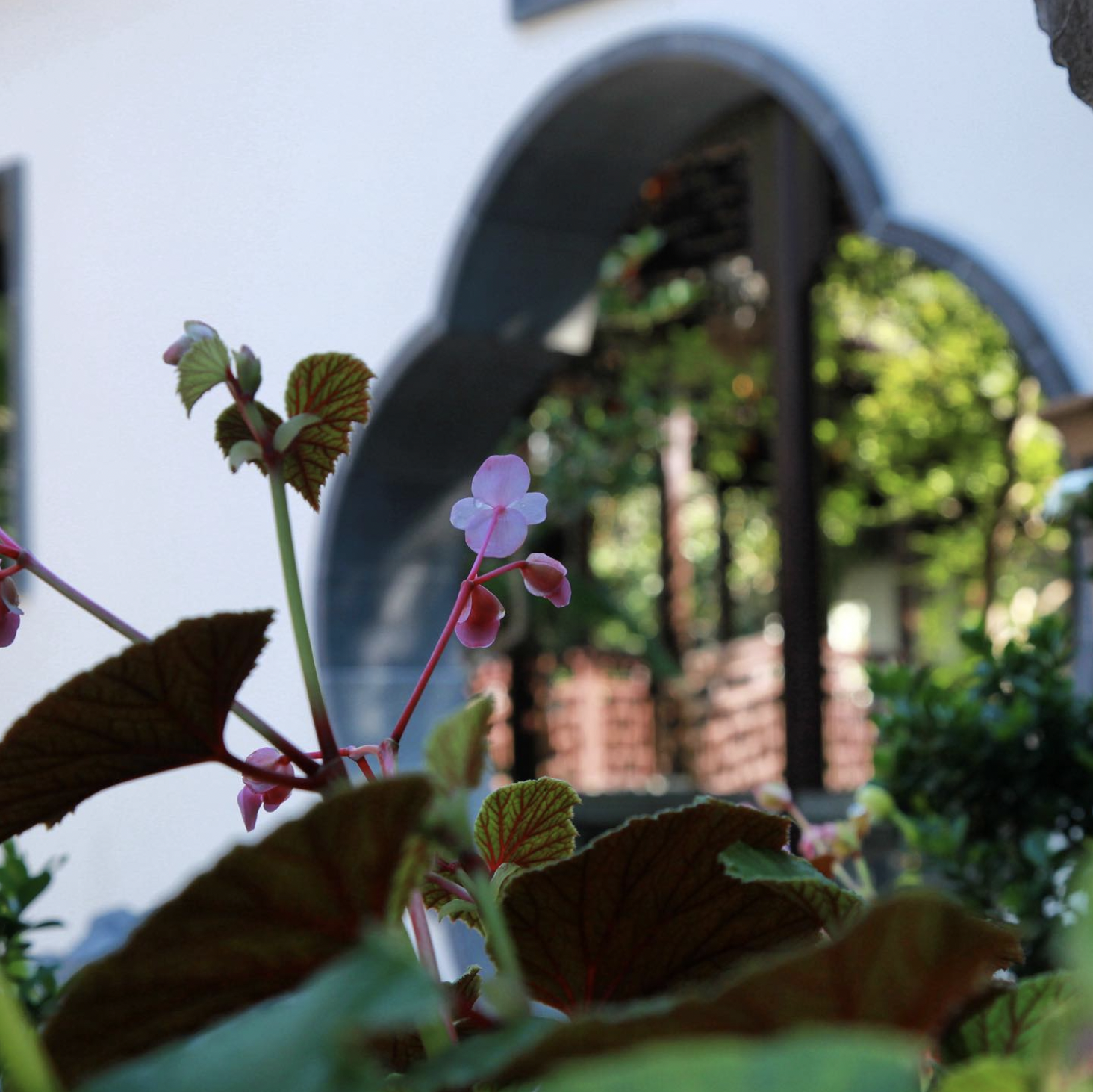
#PlantWednesday The Begonia 🌸
Have you ever noticed that plant symbols are often concentrated or repeated within a section of the garden? Not far from our striking begonia gate is an elegant begonia (Beginia grandis ssp. evansiana). The gate takes the shape of the begonia flower- which you can recognize by the cross shape with four evenly distributed petals. Admired by poets and artists since the Ming dynasty, the begonia is a symbol of nobility and scholar status. Placed here together, the echoes of begonia emphasize that you are in a scholar’s garden. 📖
Have you ever noticed that plant symbols are often concentrated or repeated within a section of the garden? Not far from our striking begonia gate is an elegant begonia (Beginia grandis ssp. evansiana). The gate takes the shape of the begonia flower- which you can recognize by the cross shape with four evenly distributed petals. Admired by poets and artists since the Ming dynasty, the begonia is a symbol of nobility and scholar status. Placed here together, the echoes of begonia emphasize that you are in a scholar’s garden. 📖
September 1, 2021
![]()
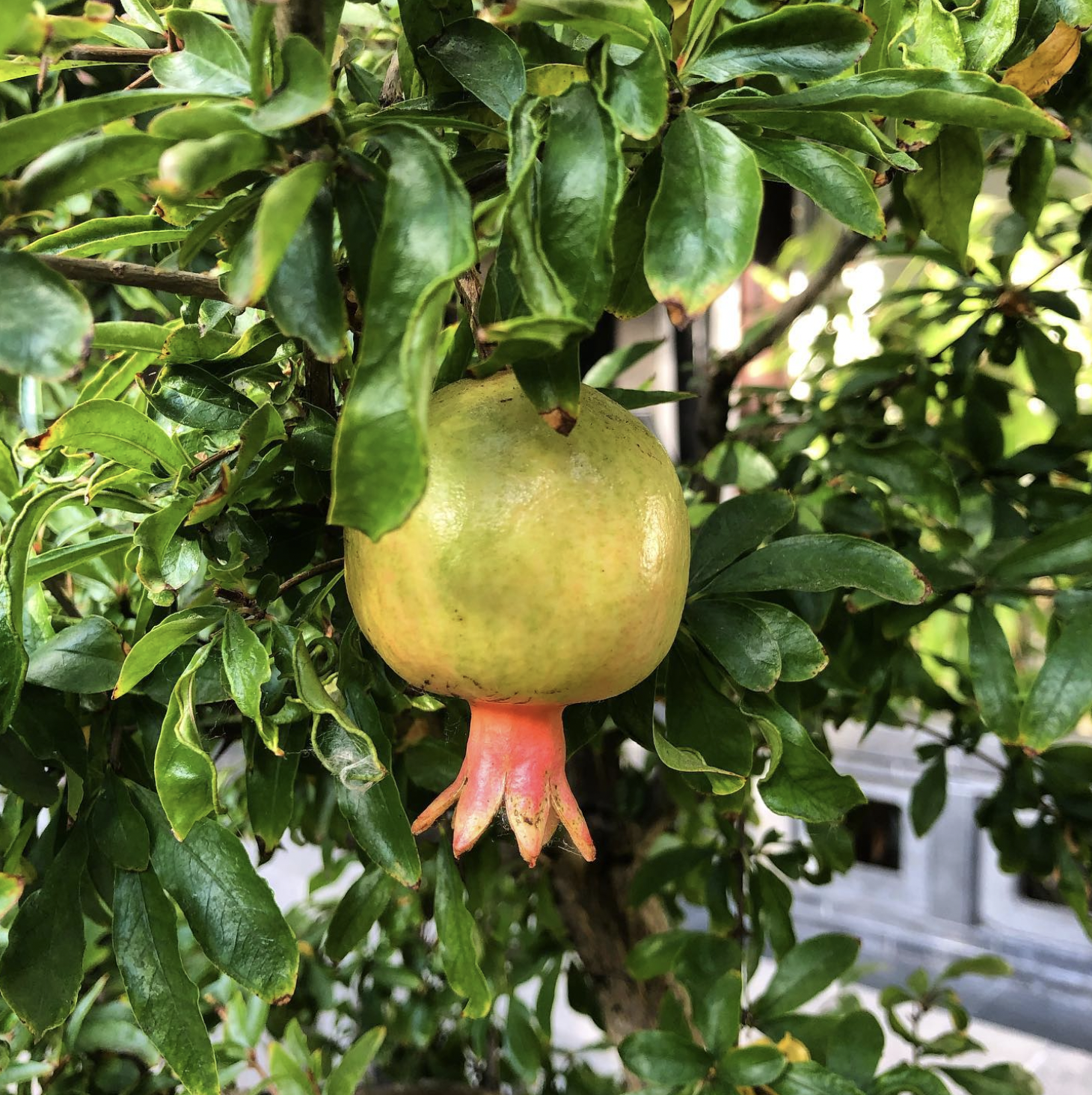
#PlantWednesday • The Incomparable Pomegranate 💫
Although not native to China, the pomegranate has been widely used in Chinese gardens as a symbol of fertility, due to its many seeds. Our ornamental cultivars are grown for their brightly colored flowers and fruits.
Although not native to China, the pomegranate has been widely used in Chinese gardens as a symbol of fertility, due to its many seeds. Our ornamental cultivars are grown for their brightly colored flowers and fruits.
August 11, 2021
![]()
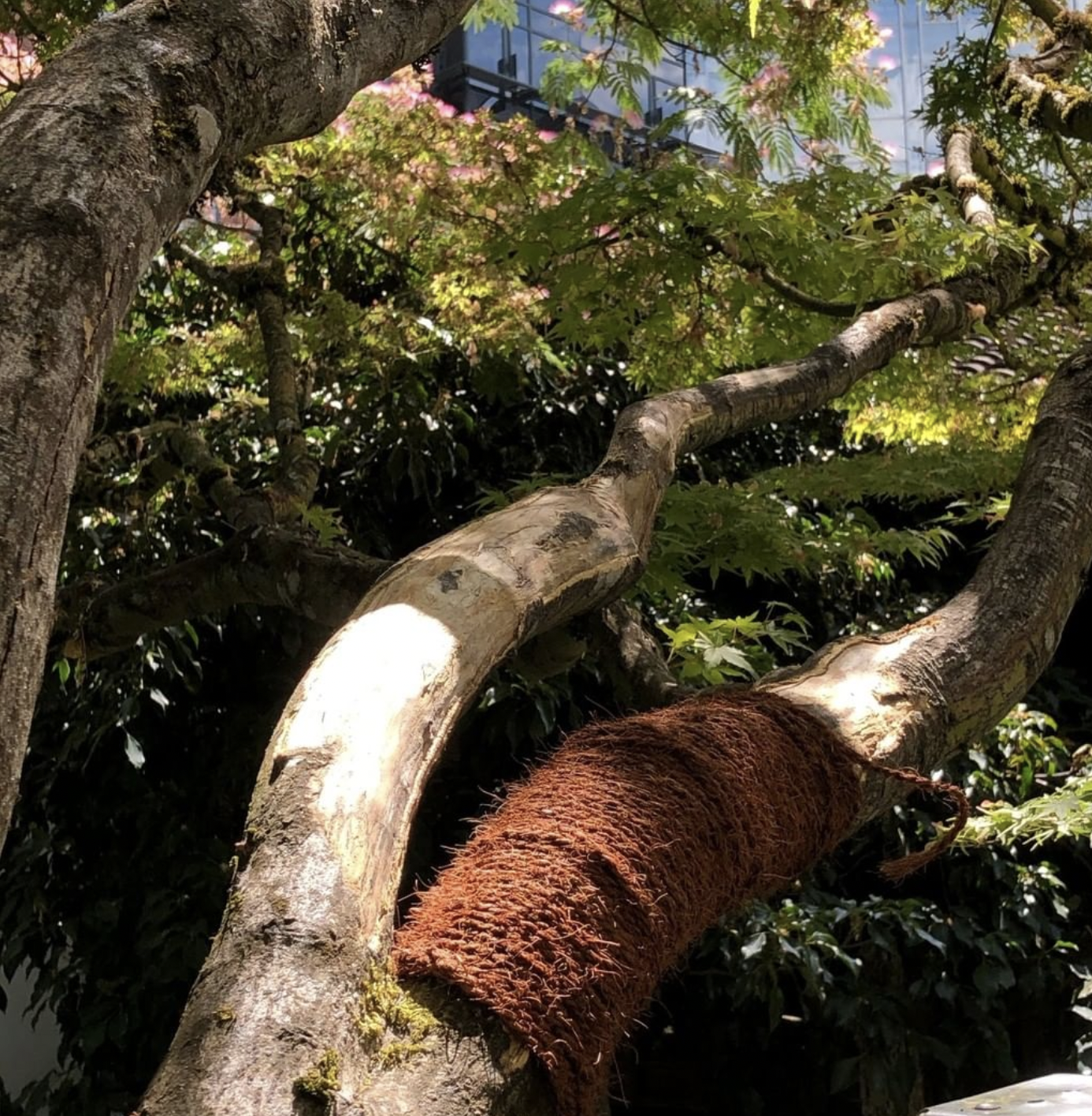
#PlantWednesday 👩⚕️🍁 The Maple Wrap
Have you noticed the newest makeover in the Scholar’s Courtyard? If you’ve spent time in the garden, you’ve undoubtedly enjoyed the shade of this Acer palmatum, a.k.a. the Japanese #maple, and maybe even appreciated the patterns its leaves make overhead. Over the past year, our beloved maple tree lost a limb, which has exposed new areas of the tree to increased heat from the afternoon sun. This added sun exposure caused some cracking in the limbs, which has allowed for fungi to move in, not to mention garden critters have been ripping bark off the damaged areas. 🐿️
👩⚕️Luckily, our horticulturist, Carla L., has been hard at work wrapping the damaged portions of the maple’s limbs with natural jute twine. Wrapping helps protect the limbs from further damage so the tree can keep thriving for years to come.
Next time you’re in the garden, take a moment to appreciate the shade this beautiful mature tree creates -- and check out it’s subtle new attire.🍁
Have you noticed the newest makeover in the Scholar’s Courtyard? If you’ve spent time in the garden, you’ve undoubtedly enjoyed the shade of this Acer palmatum, a.k.a. the Japanese #maple, and maybe even appreciated the patterns its leaves make overhead. Over the past year, our beloved maple tree lost a limb, which has exposed new areas of the tree to increased heat from the afternoon sun. This added sun exposure caused some cracking in the limbs, which has allowed for fungi to move in, not to mention garden critters have been ripping bark off the damaged areas. 🐿️
👩⚕️Luckily, our horticulturist, Carla L., has been hard at work wrapping the damaged portions of the maple’s limbs with natural jute twine. Wrapping helps protect the limbs from further damage so the tree can keep thriving for years to come.
Next time you’re in the garden, take a moment to appreciate the shade this beautiful mature tree creates -- and check out it’s subtle new attire.🍁
July 28, 2021
![]()
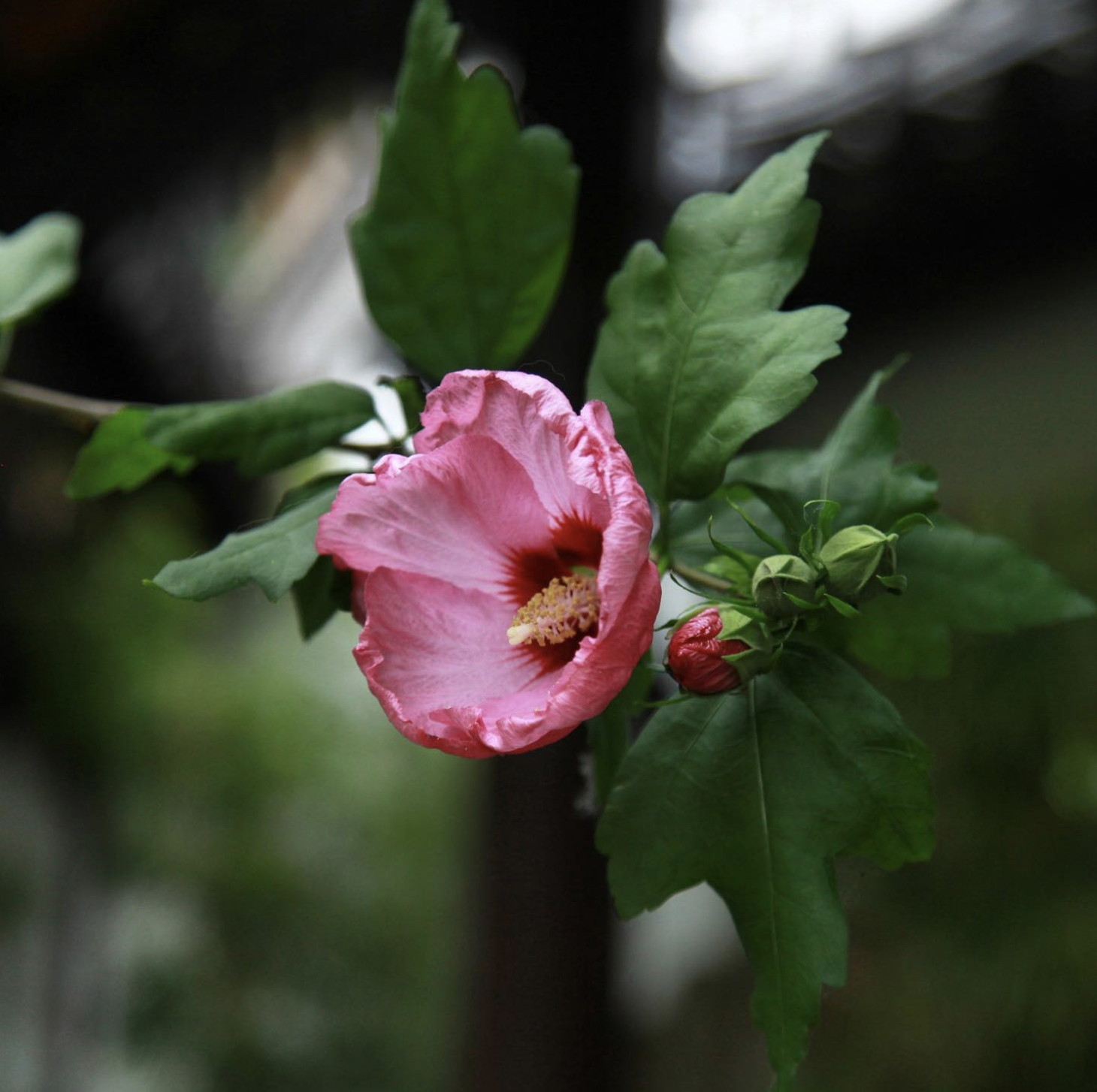
#PlantWednesday Hibiscus syriacus ‘Aphrodite’ 🌺
This time of year, hibiscus is a prolific bloomer. Hibiscus has been mentioned in Chinese writings as early as 1000 BCE and cultivated in China for millennia! It is believed to have reached the Middle East from China via the Silk Road. Hibiscus syriacus leaves can sometimes be substituted for tea — or better yet you can sample a tea made from its relative Hibiscus sabdariffa’s flowers in the Tea House 😋 @taooftea
This time of year, hibiscus is a prolific bloomer. Hibiscus has been mentioned in Chinese writings as early as 1000 BCE and cultivated in China for millennia! It is believed to have reached the Middle East from China via the Silk Road. Hibiscus syriacus leaves can sometimes be substituted for tea — or better yet you can sample a tea made from its relative Hibiscus sabdariffa’s flowers in the Tea House 😋 @taooftea
July 14, 2021
![]()
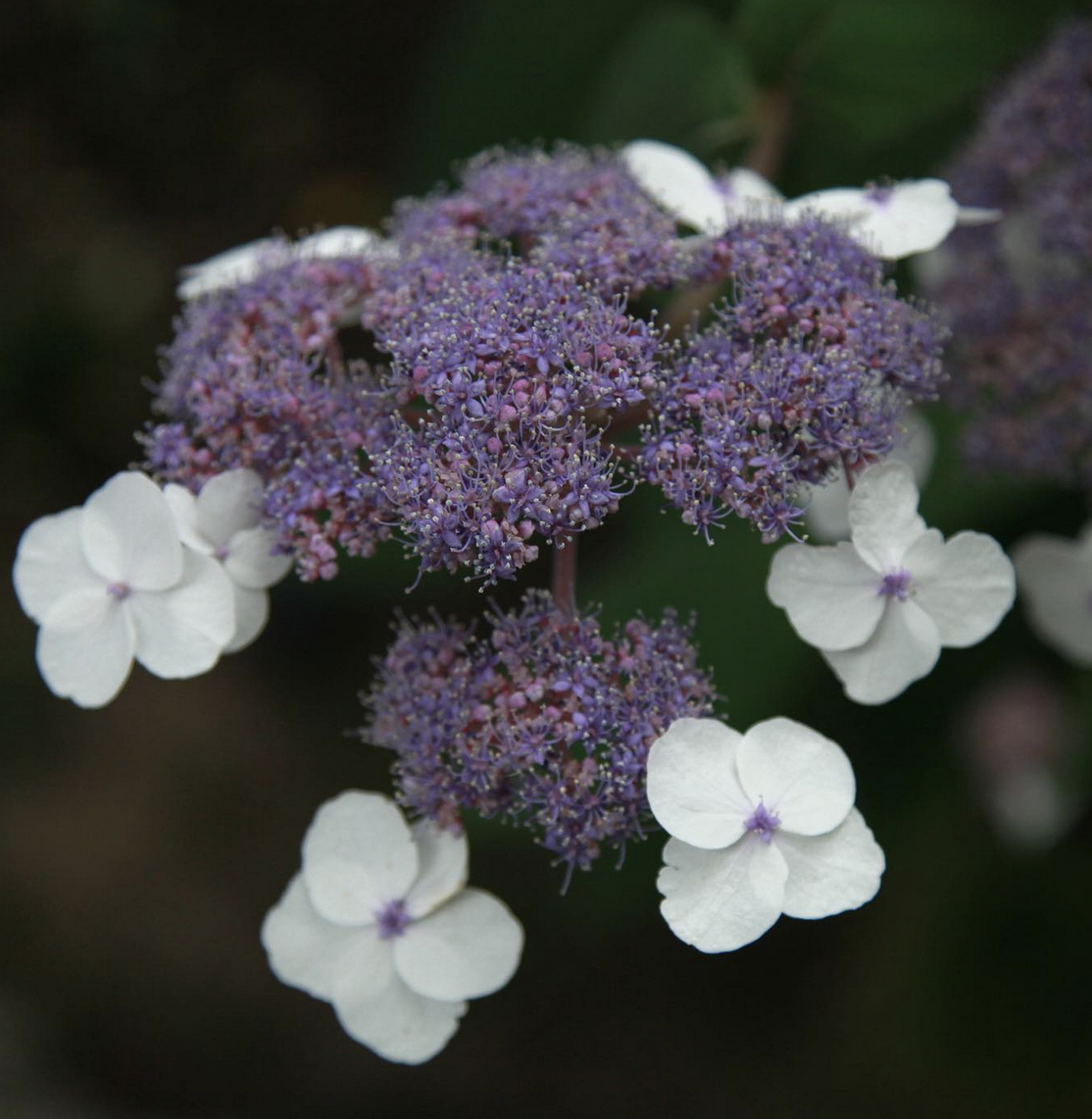
#PlantWednesday 💟💜
Did you know that the world's greatest diversity of hydrangeas comes from Asia? Hydrangea aspera ‘Macrophylla’ is a cultivar of a species native to the region between the Himalayas, across southern China, to Taiwan. This fuzzy-leaved hydrangea has wonderful lace-cap flowers in summer and velvety soft leaves. The showy ring of white “flowers” are actually sterile and can change color, depending on the pH level in the soil.
Did you know that the world's greatest diversity of hydrangeas comes from Asia? Hydrangea aspera ‘Macrophylla’ is a cultivar of a species native to the region between the Himalayas, across southern China, to Taiwan. This fuzzy-leaved hydrangea has wonderful lace-cap flowers in summer and velvety soft leaves. The showy ring of white “flowers” are actually sterile and can change color, depending on the pH level in the soil.
July 7, 2021
![]()
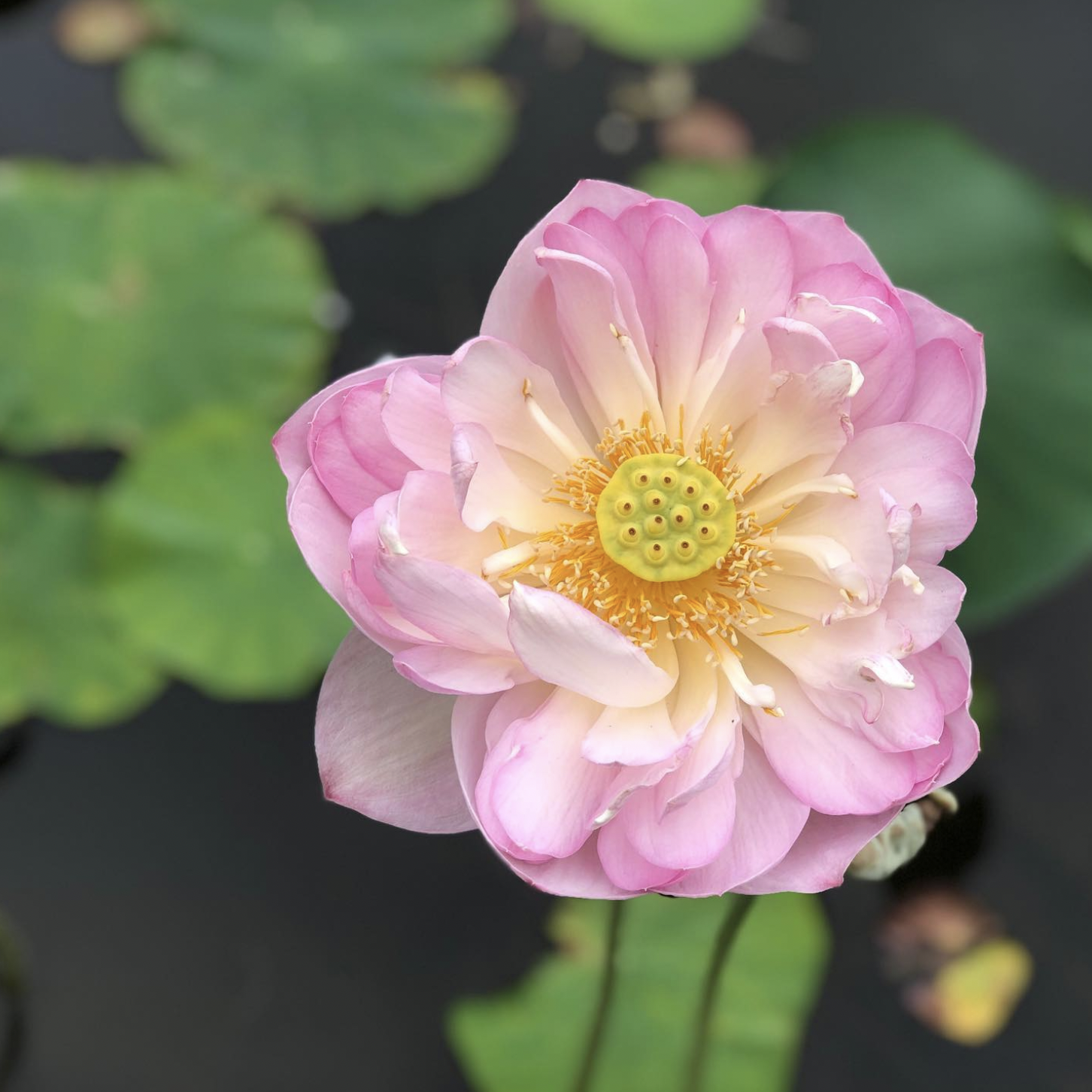
It’s #PlantWednesday and the Lotus are back! The famous words of Song dynasty philosopher, Zhou Dunyi, ring true,
“Washed by ripples yet not voluptuous, came out of mud yet not contaminated”
We permanently installed our lotus collection in Lake Zither last year and are happy to report with these first blooms that they are doing well. Lotus season is here!
Read about what else has been going in our horticultural world in the Summer Curator’s Update. Find the 🔗 in our bio.
“Washed by ripples yet not voluptuous, came out of mud yet not contaminated”
We permanently installed our lotus collection in Lake Zither last year and are happy to report with these first blooms that they are doing well. Lotus season is here!
Read about what else has been going in our horticultural world in the Summer Curator’s Update. Find the 🔗 in our bio.
June 23, 2021
![]()
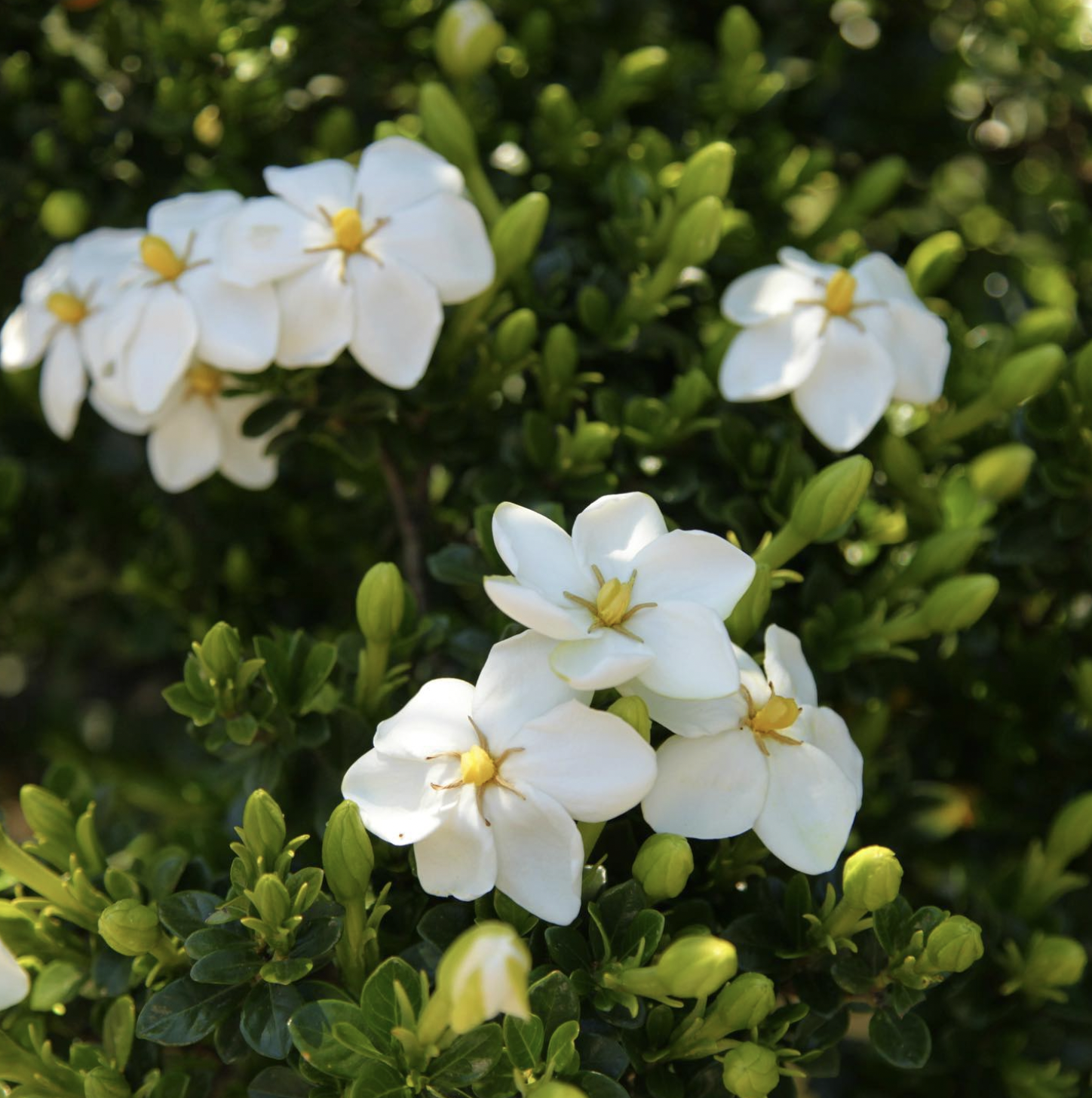
#PlantWednesday 👃🌼
Don’t you love the scent of gardenia? Our ‘Kleim’s Hardy’ are now in bloom and lending their sweet fragrance to the garden’s courtyards. These evergreen shrubs with creamy star shaped flowers have been cultivated in China for nearly 1500 years. The roots, leaves and fruits are used in Chinese medicine and are a popular motif for ceramics and other art forms.
Don’t you love the scent of gardenia? Our ‘Kleim’s Hardy’ are now in bloom and lending their sweet fragrance to the garden’s courtyards. These evergreen shrubs with creamy star shaped flowers have been cultivated in China for nearly 1500 years. The roots, leaves and fruits are used in Chinese medicine and are a popular motif for ceramics and other art forms.
June 16, 2021
![]()
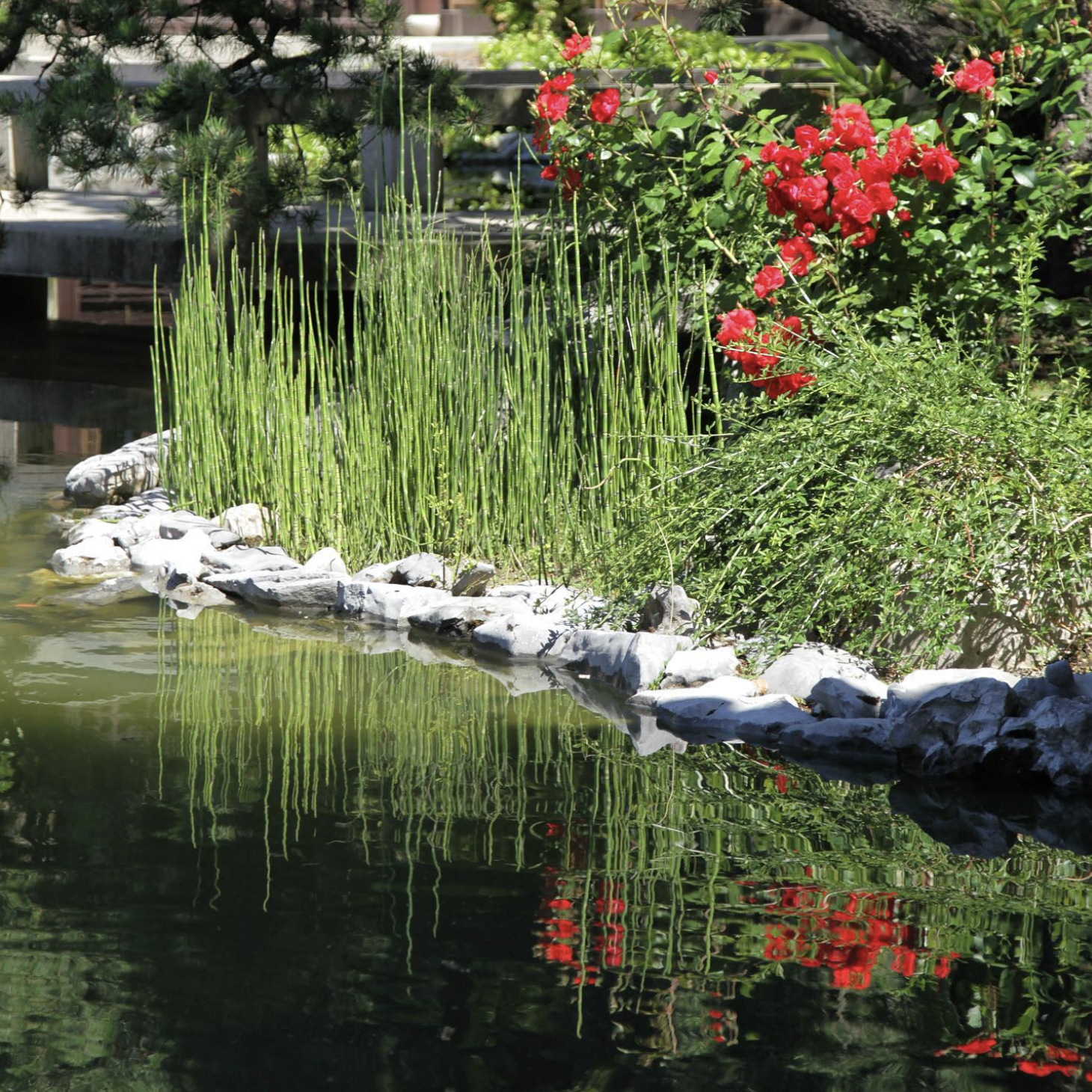
#PlantWednesday 🌹👯♀️
Showy Rosa ‘Sevillana’, while not native to China, is planted near the waterside pavilion as a nod to Portland’s sister city relationship with Suzhou. The waterside pavilion showcases wood carvings that feature famous Suzhou gardens. From that perch is a perfect view of these bright red roses, selected by the original garden designer in reference to Portland’s moniker, The City of Roses.
Showy Rosa ‘Sevillana’, while not native to China, is planted near the waterside pavilion as a nod to Portland’s sister city relationship with Suzhou. The waterside pavilion showcases wood carvings that feature famous Suzhou gardens. From that perch is a perfect view of these bright red roses, selected by the original garden designer in reference to Portland’s moniker, The City of Roses.
June 9, 2021
![]()
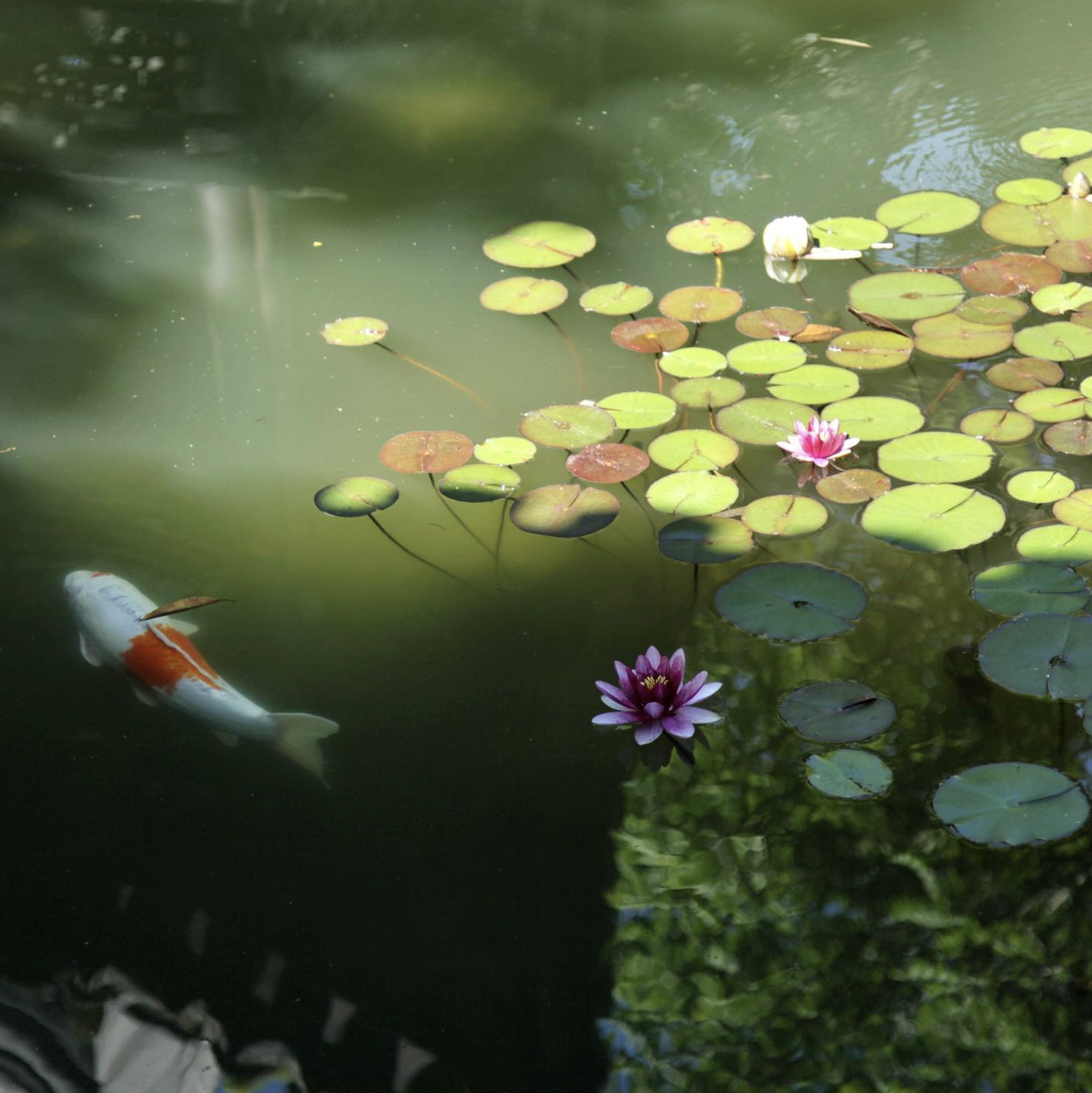
#PlantWednesday 🌸😴
Aquatic plants — most commonly, water lilies and lotus — are an important part of a traditional Chinese garden. Water lilies (Nymphaea species) have somewhat heart-shaped leaves that rest flat on the water’s surface with their pink and white flowers floating among them. In Chinese, water lilies are called sleeping lotus or sleeping lilies because they open in the morning and close at night. ✨
Aquatic plants — most commonly, water lilies and lotus — are an important part of a traditional Chinese garden. Water lilies (Nymphaea species) have somewhat heart-shaped leaves that rest flat on the water’s surface with their pink and white flowers floating among them. In Chinese, water lilies are called sleeping lotus or sleeping lilies because they open in the morning and close at night. ✨
June 2, 2021
![]()

#PlantWednesday 🍃
This time of year, flowers get all the hype but we’re taking a moment to highlight some beautiful foliage that can be found at Lan Su. 🌿 How cool are the patterns on these leaves? Persicaria ‘Red Dragon’ is an herbaceous perennial with deep purple foliage (it also happens to have delicate white flowers resembling baby’s breath that emerge in summer). In its wild form, it is found in several Chinese provinces, as well as India and Nepal. 💜What’s your favorite leaf shape at Lan Su?
This time of year, flowers get all the hype but we’re taking a moment to highlight some beautiful foliage that can be found at Lan Su. 🌿 How cool are the patterns on these leaves? Persicaria ‘Red Dragon’ is an herbaceous perennial with deep purple foliage (it also happens to have delicate white flowers resembling baby’s breath that emerge in summer). In its wild form, it is found in several Chinese provinces, as well as India and Nepal. 💜What’s your favorite leaf shape at Lan Su?
May 26, 2021
![]()

#PlantWednesday
It’s that special time of year when our hardy mock orange (Pittosporum tobira, ‘Tall and Tough’) is filling the Fragrance Courtyard with it’s sweet perfume reminiscent of orange blossoms. 🍊👃🌼 We wish we could upload this smell!
It’s that special time of year when our hardy mock orange (Pittosporum tobira, ‘Tall and Tough’) is filling the Fragrance Courtyard with it’s sweet perfume reminiscent of orange blossoms. 🍊👃🌼 We wish we could upload this smell!
May 19, 2021
![]()
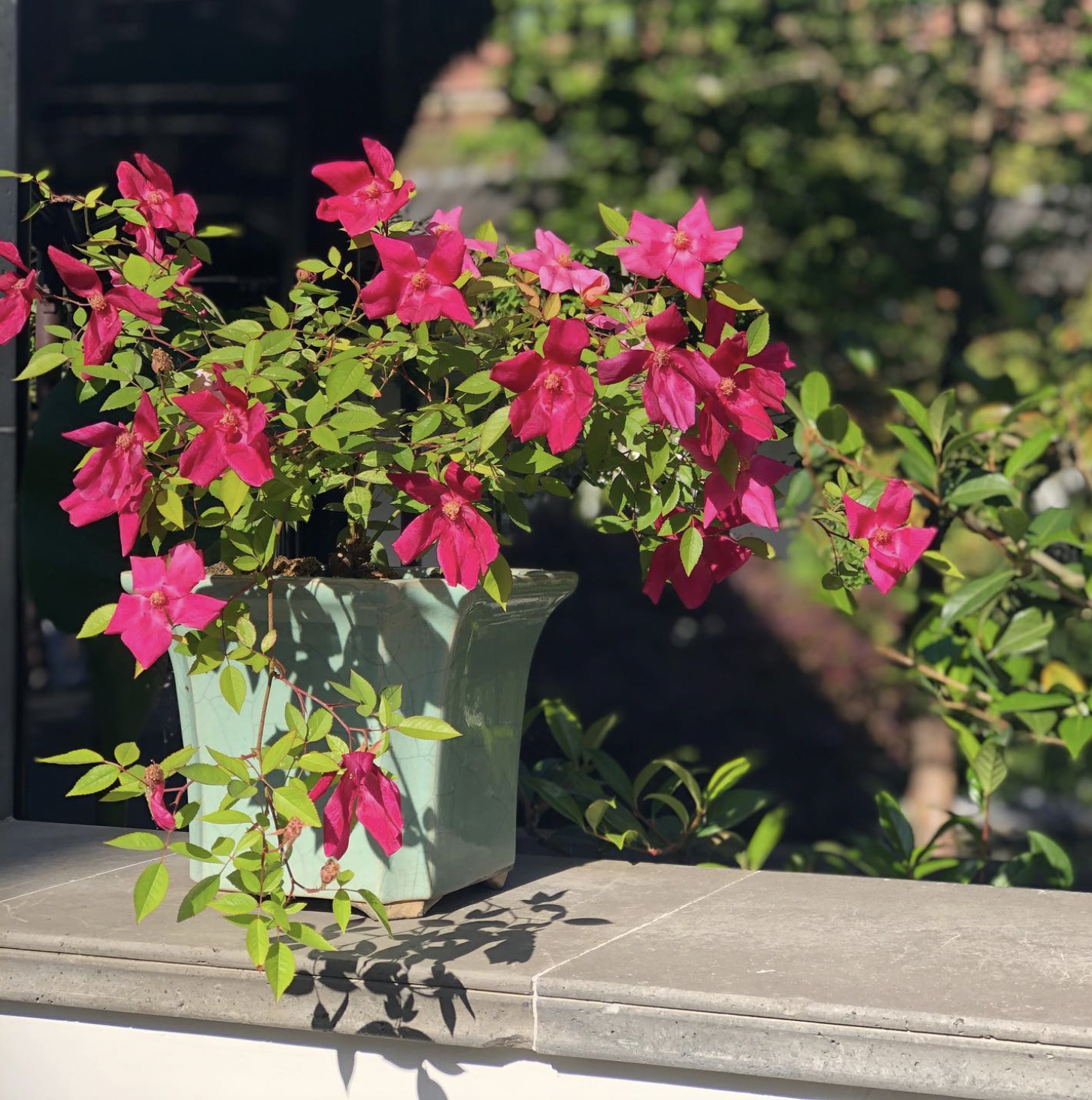
#PlantWednesday 🌹
This cheery rose (Rosa chinensis ‘Mutabilis’) is playing garden host right now, greeting all our guests as they enter the Courtyard of Tranquility.
R. chinensis is a member of the genus Rosa native to Southwesten China. ‘Mutabilis’ is a repeat-bloomer with flowers that change color as they age - from pale yellow to peach then pink. It was used in the development of hybrid tea roses in England in the 19th century, and inducted into the World Federation of Rose Society’s Hall of Fame in 2012. 🏆
This cheery rose (Rosa chinensis ‘Mutabilis’) is playing garden host right now, greeting all our guests as they enter the Courtyard of Tranquility.
R. chinensis is a member of the genus Rosa native to Southwesten China. ‘Mutabilis’ is a repeat-bloomer with flowers that change color as they age - from pale yellow to peach then pink. It was used in the development of hybrid tea roses in England in the 19th century, and inducted into the World Federation of Rose Society’s Hall of Fame in 2012. 🏆
May 12, 2021
![]()
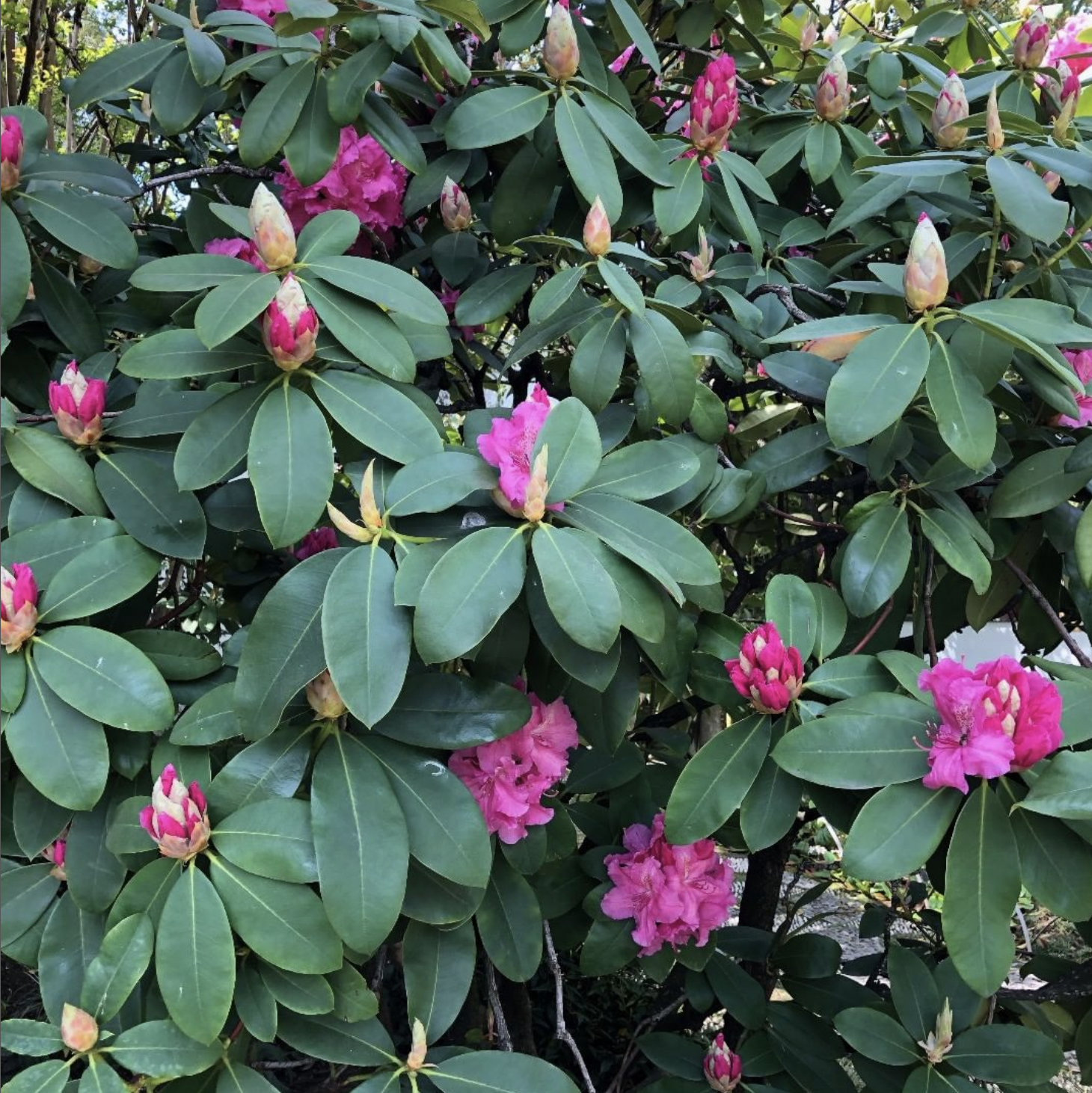
#PlantWednesday 💐
Rhododendron’s common name in Chinese is associated with the cuckoo bird. An ancient poem links the bird’s seasonal singing with the rhododendron’s springtime bloom. Find stunning examples of colorful hybrids and species rhododendrons flowering throughout Lan Su all spring. Pictured here is Rhododendron ‘Trude Webster’. What a stunner! 💓
Rhododendron’s common name in Chinese is associated with the cuckoo bird. An ancient poem links the bird’s seasonal singing with the rhododendron’s springtime bloom. Find stunning examples of colorful hybrids and species rhododendrons flowering throughout Lan Su all spring. Pictured here is Rhododendron ‘Trude Webster’. What a stunner! 💓
April 28, 2021
![]()
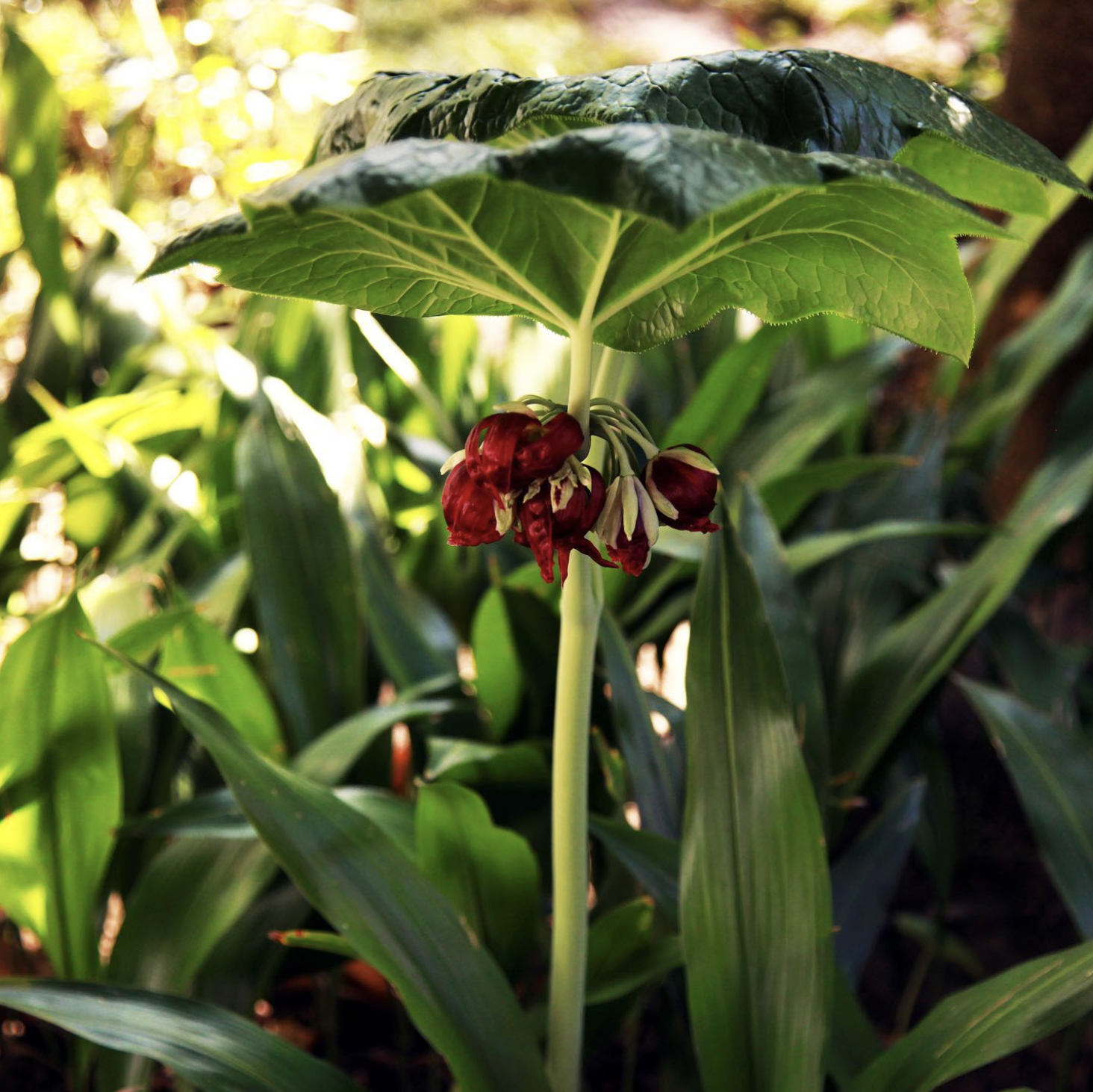
#PlantWednesday
🍀May is just around the corner and our Mayapples (Podophyllum pleianthum) are right on schedule. 🍎🗓This unusual-smelling and understated shade lover is native to central and southeastern China. In late spring, red, rounded flowers dangle from short stems between two leaves, giving them this common name. You can find them in the understory as you walk along the garden path right before reaching the Lounge Hall.
🍀May is just around the corner and our Mayapples (Podophyllum pleianthum) are right on schedule. 🍎🗓This unusual-smelling and understated shade lover is native to central and southeastern China. In late spring, red, rounded flowers dangle from short stems between two leaves, giving them this common name. You can find them in the understory as you walk along the garden path right before reaching the Lounge Hall.
April 21, 2021
![]()
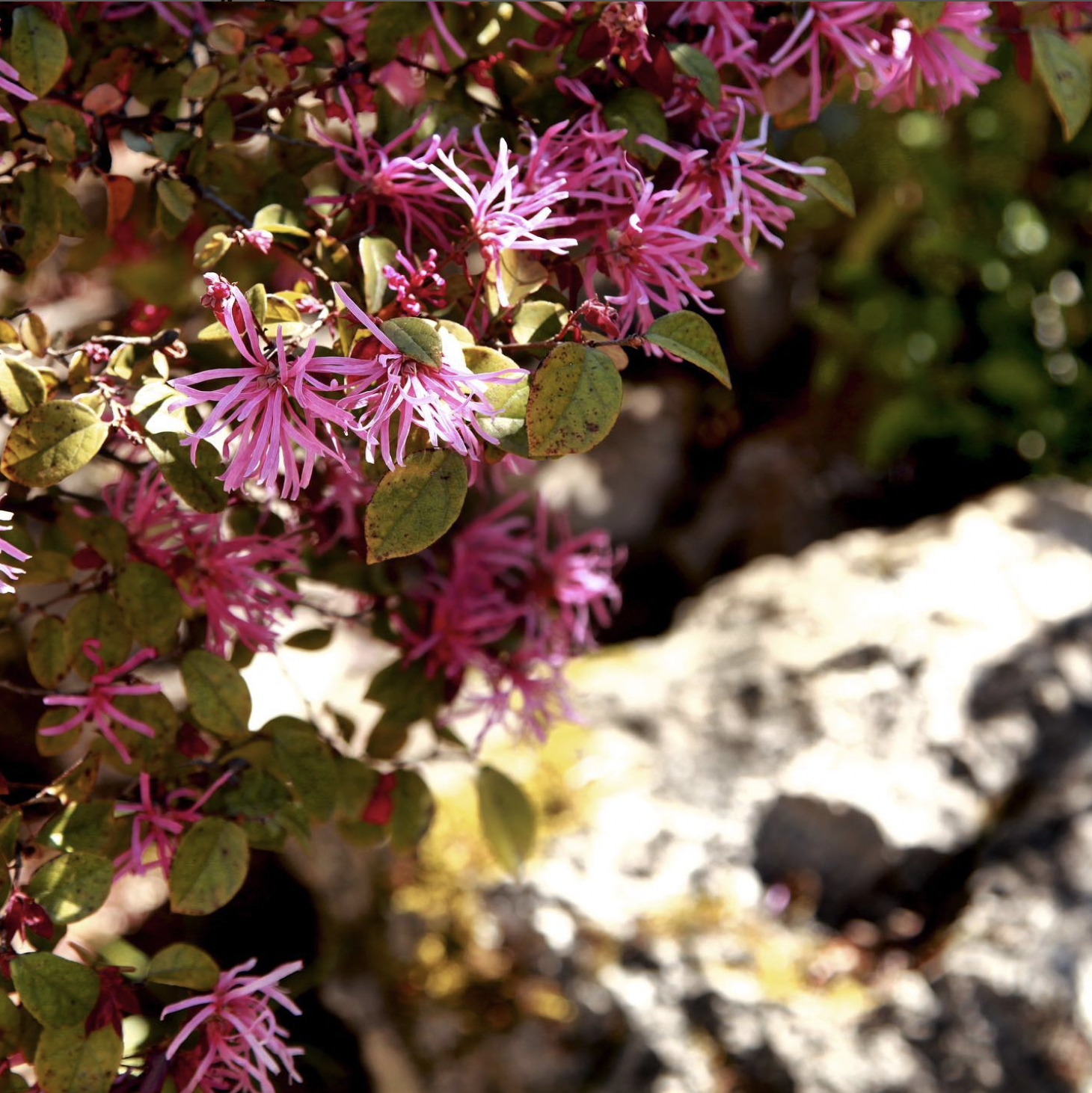
#PlantWednesday
The peonies may be dazzling us in the Scholar’s Courtyard, but across Lake Zither, another pink beauty is starting its illustrious bloom — Chinese fringe flower! (Lorapetalum chinese). This evergreen shrub is in the witch hazel family. At Lan Su we have several specimens with magenta flowers that provide bright color in spring and summer. 💖🌸
The peonies may be dazzling us in the Scholar’s Courtyard, but across Lake Zither, another pink beauty is starting its illustrious bloom — Chinese fringe flower! (Lorapetalum chinese). This evergreen shrub is in the witch hazel family. At Lan Su we have several specimens with magenta flowers that provide bright color in spring and summer. 💖🌸
April 14, 2021
![]()
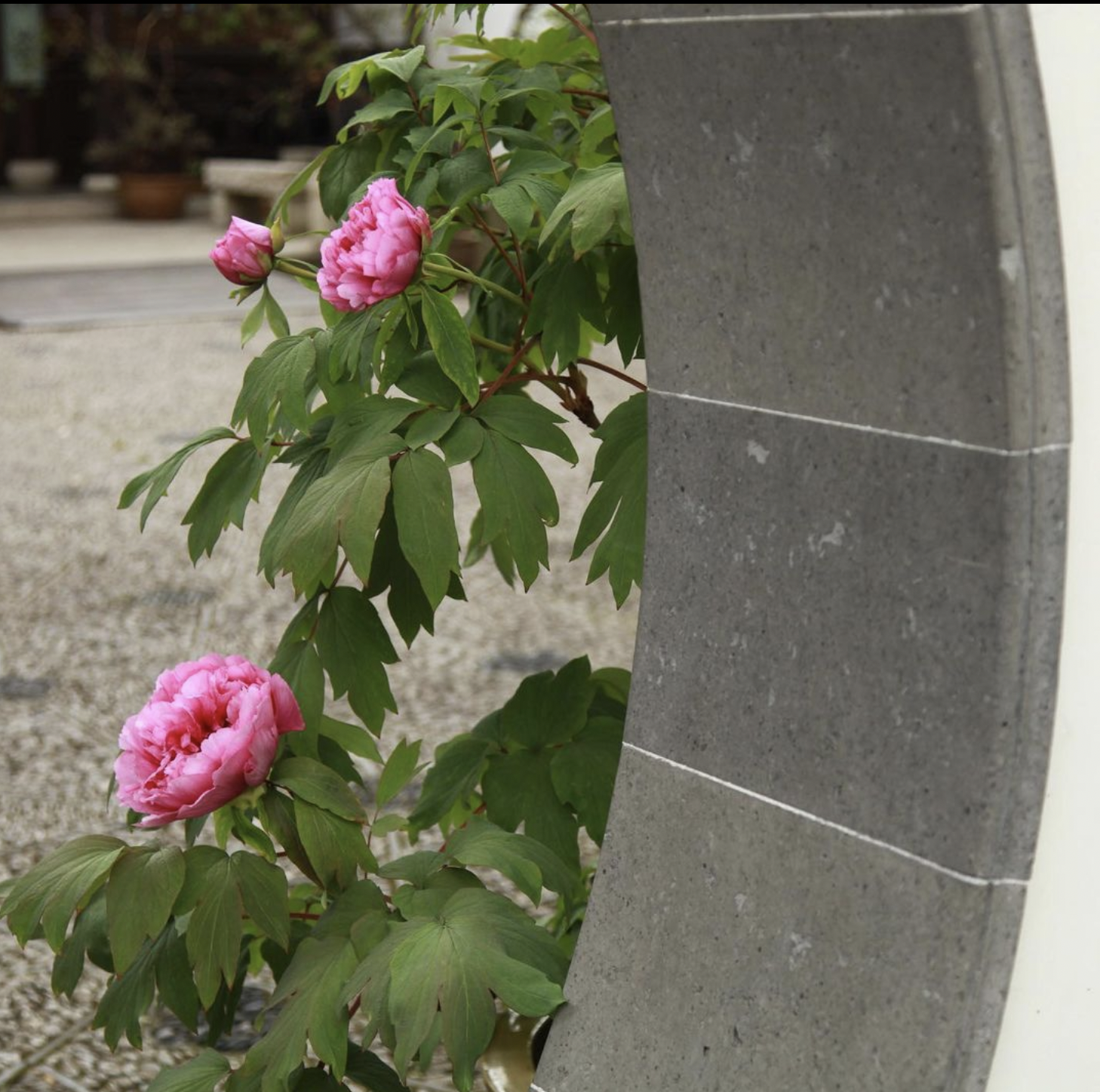
#PlantWednesday
You've heard of late bloomers, now get ready for... an early riser! 🌸
Our Paeonia x suffruticosa 'Duchesse de Morny' is blooming already and excited to show off its beauty. In stories, peonies are famously headstrong so it’s no surprise this one is already blooming. In a legend about Empress Wu of Tang dynasty, she ordered all the flowers in her royal garden to bloom. All but one type feared her power and bloomed. The ones who didn't? Peonies. This obstinacy enraged Empress Wu, and she banished the peonies from the capital city of Chang'an to the city of Luoyang. After the move, the flowers bloomed beautifully. This further fanned Empress Wu's anger, so she ordered all the peonies to be burned. Despite the destructive fire, one year later, the peonies beautifully bloomed again. 👑
You've heard of late bloomers, now get ready for... an early riser! 🌸
Our Paeonia x suffruticosa 'Duchesse de Morny' is blooming already and excited to show off its beauty. In stories, peonies are famously headstrong so it’s no surprise this one is already blooming. In a legend about Empress Wu of Tang dynasty, she ordered all the flowers in her royal garden to bloom. All but one type feared her power and bloomed. The ones who didn't? Peonies. This obstinacy enraged Empress Wu, and she banished the peonies from the capital city of Chang'an to the city of Luoyang. After the move, the flowers bloomed beautifully. This further fanned Empress Wu's anger, so she ordered all the peonies to be burned. Despite the destructive fire, one year later, the peonies beautifully bloomed again. 👑
April 7, 2021
![]()

#PlantWednesday
✨Introducing a special addition to the garden’s plant collection, generously donated to Lan Su by the @pacificbonsaimuseum -- a beautiful Chinese juniper penjing. 🌱This plant has been cultivated as a bonsai for 50 years, and will be transformed over the next few years into a penjing by our Curator of Horticulture, Justin Blackwell. Bonsai is a Japanese version of the traditional Chinese art of penjing (盆景 - literally scenery in a pot). While both are artistic interpretations of nature, the aim of penjing is to create a small-scale landscape scenery, whereas bonsai is specifically focused on recreating the shape of a full-grown tree in miniature. Swipe through to see our new penjing’s journey to Lan Su.
✨Introducing a special addition to the garden’s plant collection, generously donated to Lan Su by the @pacificbonsaimuseum -- a beautiful Chinese juniper penjing. 🌱This plant has been cultivated as a bonsai for 50 years, and will be transformed over the next few years into a penjing by our Curator of Horticulture, Justin Blackwell. Bonsai is a Japanese version of the traditional Chinese art of penjing (盆景 - literally scenery in a pot). While both are artistic interpretations of nature, the aim of penjing is to create a small-scale landscape scenery, whereas bonsai is specifically focused on recreating the shape of a full-grown tree in miniature. Swipe through to see our new penjing’s journey to Lan Su.

